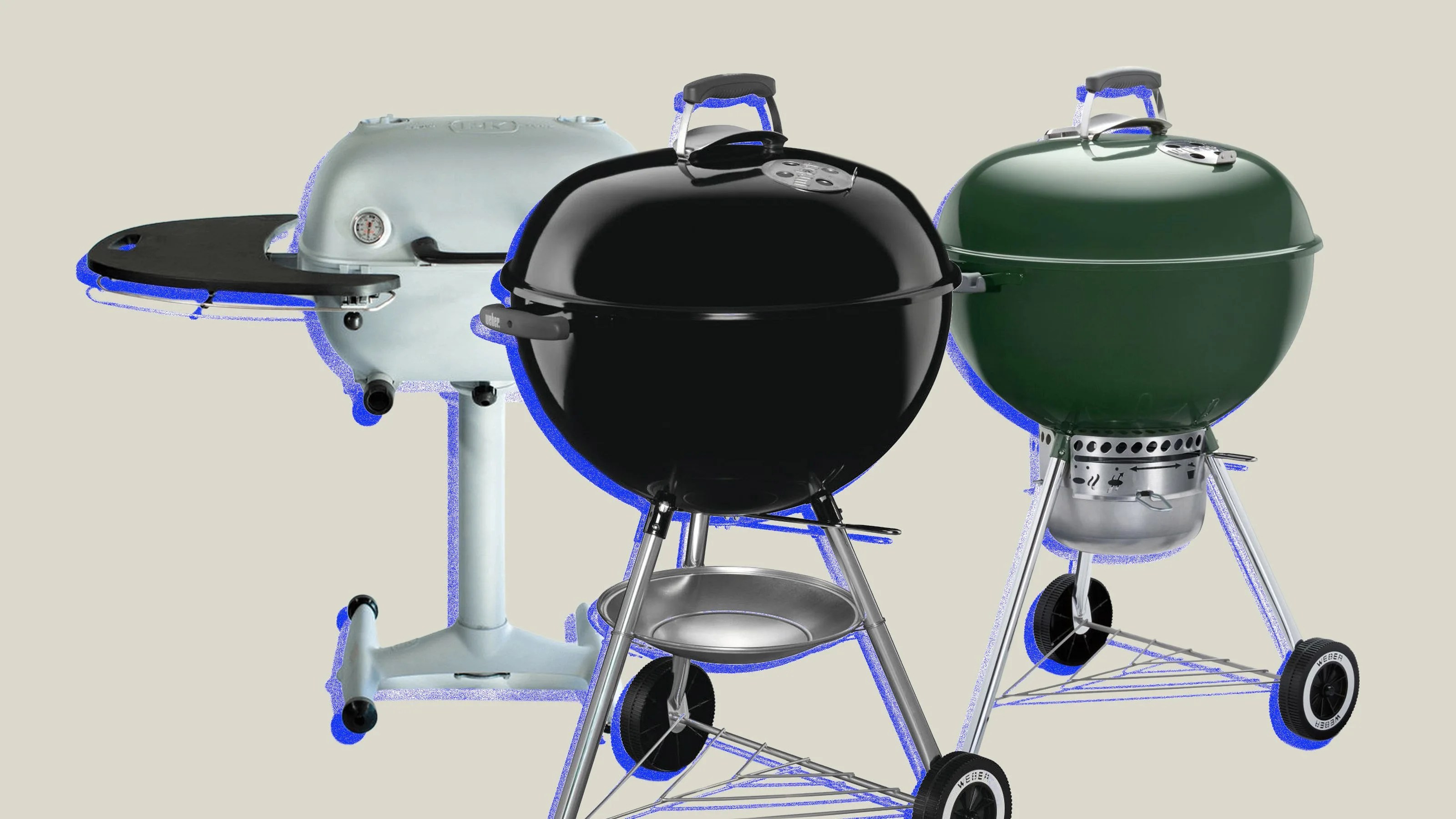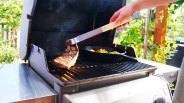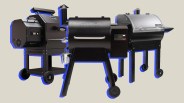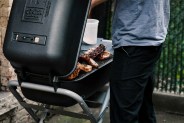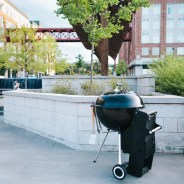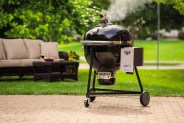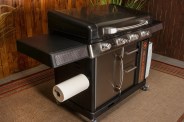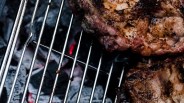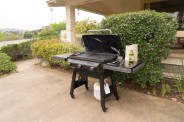Beyond BTUs, max temperatures and fuel cost, the fundamental difference between charcoal grills and their competitors is convenience. Charcoal grills are inconvenient in every way that a gas, pellet or electric grill is not. This is the fundamental appeal. In the same way, many driving enthusiasts prefer manuals to automatics, there is carnal satisfaction in direct control, higher failure rates and sky-high potential. Yes, charcoal grills can do things the others can’t, but it’s the no-handlebars process that makes it great. From the most iconic backyard toy of the 20th century to a briefcase that cooks and smokes food, these are the best you can buy right now.
Products in the Guide
-
Weber Original Kettle Premium
Best Charcoal Grill For Most People
Read more -
PK Grills PK360 Grill & Smoker
Best Upgrade Charcoal Grill
Read more -
Weber Original Kettle Charcoal Grill
Best Budget Charcoal Grill
Read more -
Kamado Joe Konnected Joe
Best Smart Charcoal Grill
Read more -
Kalamazoo K750GB Built-in Gaucho Grill
Best Built-In Charcoal Grill
Read more -
Burch Barrel
Best Charcoal Grill for Entertaining
Read more -
Big Green Egg Large Charcoal Grill and Smoker
Best Kamado-Style Charcoal Grill
Read more -
Napoleon Charcoal Professional Grill
Best Freestanding Charcoal Grill
Read more -
Yoder Smokers Abilene
Best Charcoal Grill and Smoker
Read more -
PK Grills OriginalPK PK300
Best Charcoal Grill and Smoker for Beginners
Read more -
Hasty Bake Legacy 131 Charcoal Grill
Best Professional Charcoal Grill
Read more -
Everdure by Heston Blumenthal HUB
Best Flex Charcoal Grill
Read more -
Texas Original Pits Corsicana
Best Wood-Compatible Charcoal Grill
Read more -
Weber Go-Anywhere Charcoal Grill
Best Portable Charcoal Grill
Read more -
Nomad Grill & Smoker
BEST UPGRADE PORTABLE CHARCOAL GRILL
Read more -
Nexgrill Cart Grill
Best Entry-Level Charcoal Grill
Read more -
Masterbuilt Gravity Series Grill
Best Computer-Operated Charcoal Grill
Read more
What to Look for in a Charcoal Grill
Materials Matter
Whether you’re shopping online or in person, seek out construction information. Does the listing have two dozen bullets touting all the ceramic, heavy-gauge stainless steel, cast aluminum and enameled iron (or steel)? That’s a good sign. If it’s not flexing its construction, it’s more likely to have rust spots, fail at retaining heat and generally come apart earlier than you’d want.
Beefy Warranties
Buying a grill that’s a few hundred dollars and it has a one-year parts warranty? Don’t buy it. Something that costs that much should be guaranteed, in part at least, for three to five years. Some of the grills on this guide come with lifetime part warranties.
Adjustable (and Customizable) Grates
Look for a wheel or lever that lets you move the grates or the coal bed up and down — preferably both. This allows for more cooking methods. As an added bonus, some companies offer upgraded grates (or there are aftermarket grates you can buy). We prefer stainless steel for ease of cleaning and more balanced heat distribution.
Vents! Vents! Vents!
In the making of a single meal, airflow determines quality more than great grates, coal quality and construction. It allows for you to feed a fire to sear like you want, keep a medium heat to roast a chicken or smoke ribs nice and slow. The more vents to play with, the better.
Delivery and Setup
This is a simple one. Some grills come fully assembled, others take a full day to set up. Look at this before shipping a 500-pound piece of metal to your house.
How We Tested
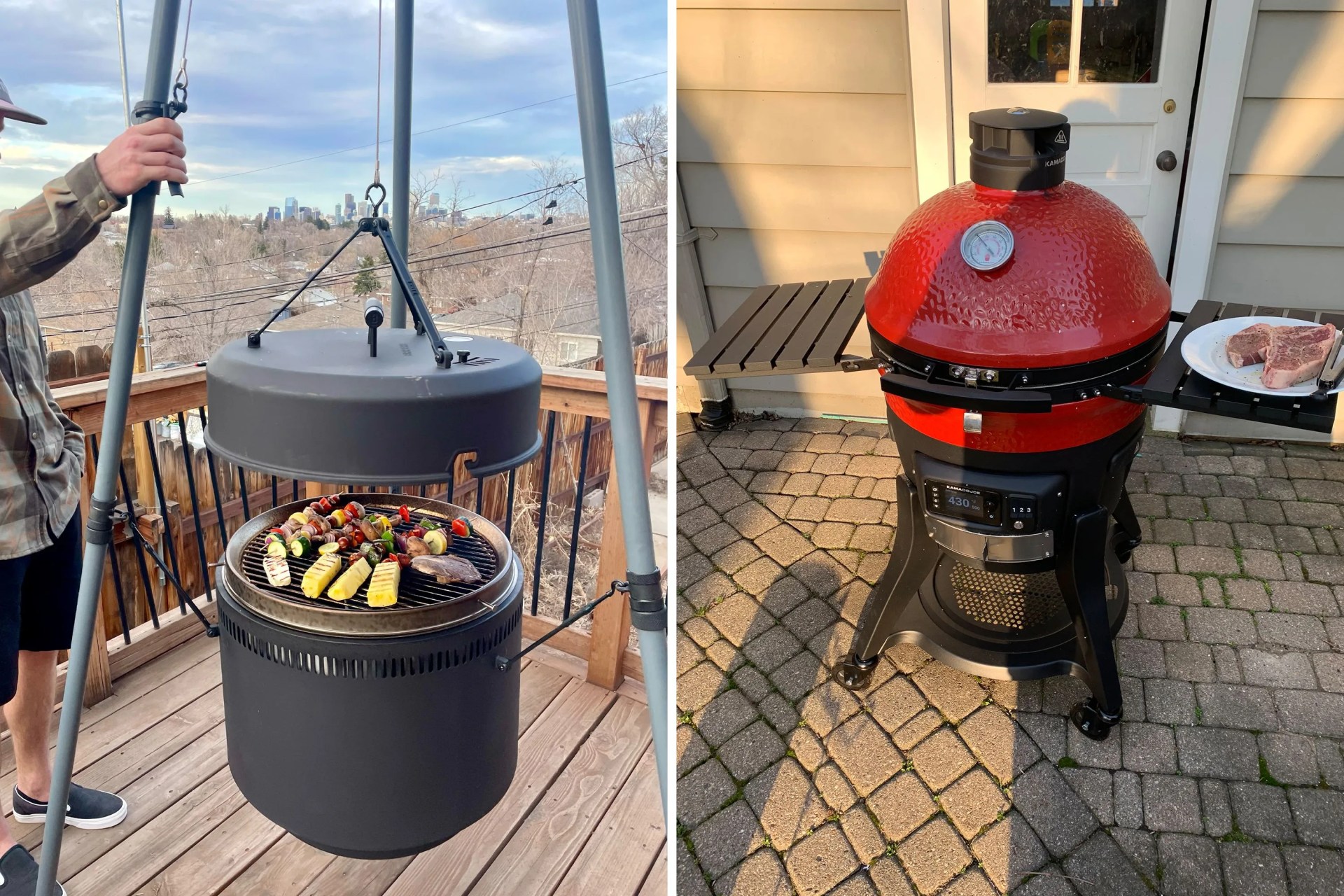 Gear Patrol Staff
Gear Patrol StaffOur testers spent weeks with their grills, using them to grill various meats and vegetables and experimenting with more advanced techniques like smoking and two-zone cooking. Our testers made sure to note how easy their grills were to set up, what was required to clean and maintain them and, perhaps most importantly, what the grilling process was like when it came to things like adjusting the temperature or checking on their cooks.
Weber Original Kettle Premium Charcoal Grill
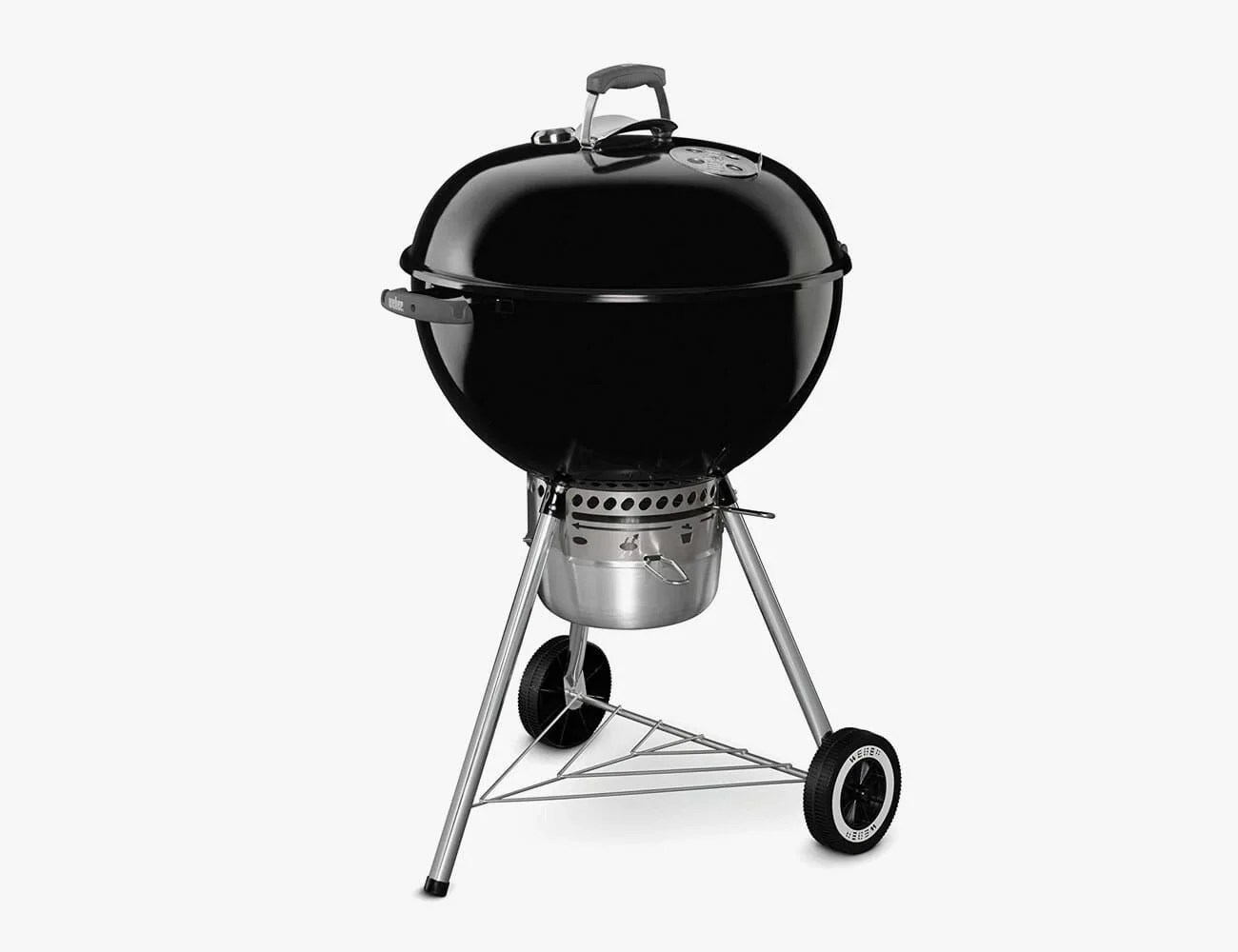 Weber
WeberBest Charcoal Grill For Most People
Weber Original Kettle Premium
Pros
- Exceptional price-quality ratio
- Improved ash catch
- Extremely versatile with cooking methods
Cons
- Size is an issue if grilling for a crowd
- Built-in thermometer isn't accurate enough to use
- Sizes: 18 inches, 22 inches, 26 inches
- Materials: Porcelain-enameled steel housing, steel grates
When you talk about charcoal grilling, you start with Weber’s kettle. The brand continues to represent the ideal mix of performance and price. Its customary porcelain-enameled steel body is sturdy enough to lock heat in and light enough to tow around without throwing out your back. Its construction is such that moving parts, screws and levers are kept to a bare minimum, which means it lasts much, much longer than other grills under $200.
This is the slightly souped-up version of the classic Weber kettle, and if you’re going to be charcoal grilling often, the one you want. The biggest difference between the original and the premium versions is the latter’s ash catch, which makes cleanup significantly quicker and tidier. Another bonus of investing in Weber kettles is the vast collection of aftermarket accessories you can get for one.
Using the grill, the ovoid shape is immediately useful. Using a rectangular grill, the edges of the grill are usually off-limits to most food, because when you close the angled lid it brushes up against the food, and the edges are typically cooler. The Weber’s dome lid doesn’t have these issues. The shape also allows you to get creative with your coal placement and with what you’re cooking. Consider the snake charcoal placement method for low-and-slow smoking or a more traditional two-zone setup.
PK Grills PK360 Grill & Smoker
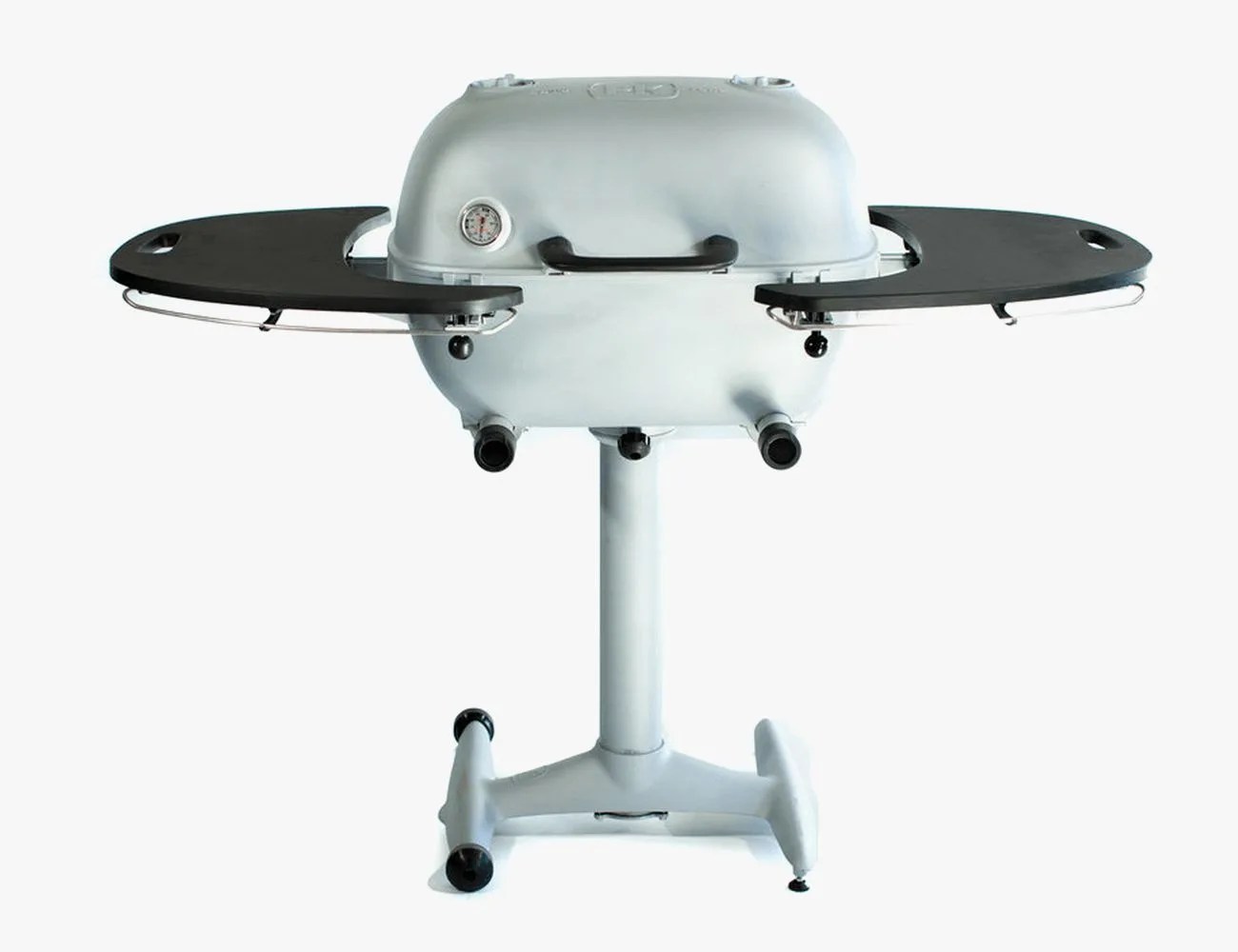 PK Grills
PK GrillsBest Upgrade Charcoal Grill
PK Grills PK360 Grill & Smoker
-
$1,199.99 (30% off)
Pros
- Cast-aluminum design is indestructible
- Added counter space is welcome
- Perfect vent placement
Cons
- For the money, we'd like more grilling space
- Size: 24.8 inches
- Materials: Aluminum housing, stainless steel grates
Let’s get this out of the way: almost any charcoal grill can be a smoker, too. It comes down to having enough space to create two-zone cooking areas (explained superbly by Amazing Ribs here). This is what PK (short for Portable Kitchen) grills are known for — they’re small enough to toss in the bed of a pickup with other tailgate gear, yet, thanks to four very smartly placed vents, functional enough to grill and smoke at high levels.
The PK grill is outfitted with vents on the top right, top left, bottom right and bottom left of the cast-aluminum grill body. When you want to sear steaks, chops or chicken, you open the fuel-side vents and let the fire rip. When you want to smoke ribs or a small pork butt, place the coals on one side of the grill and the meat on the opposite side of the grates. Then open the vent under the coals and over the meat — this feeds the fire and smokes the meat indirectly. The entire thing is rust-proof, too.
Weber Original Kettle Charcoal Grill
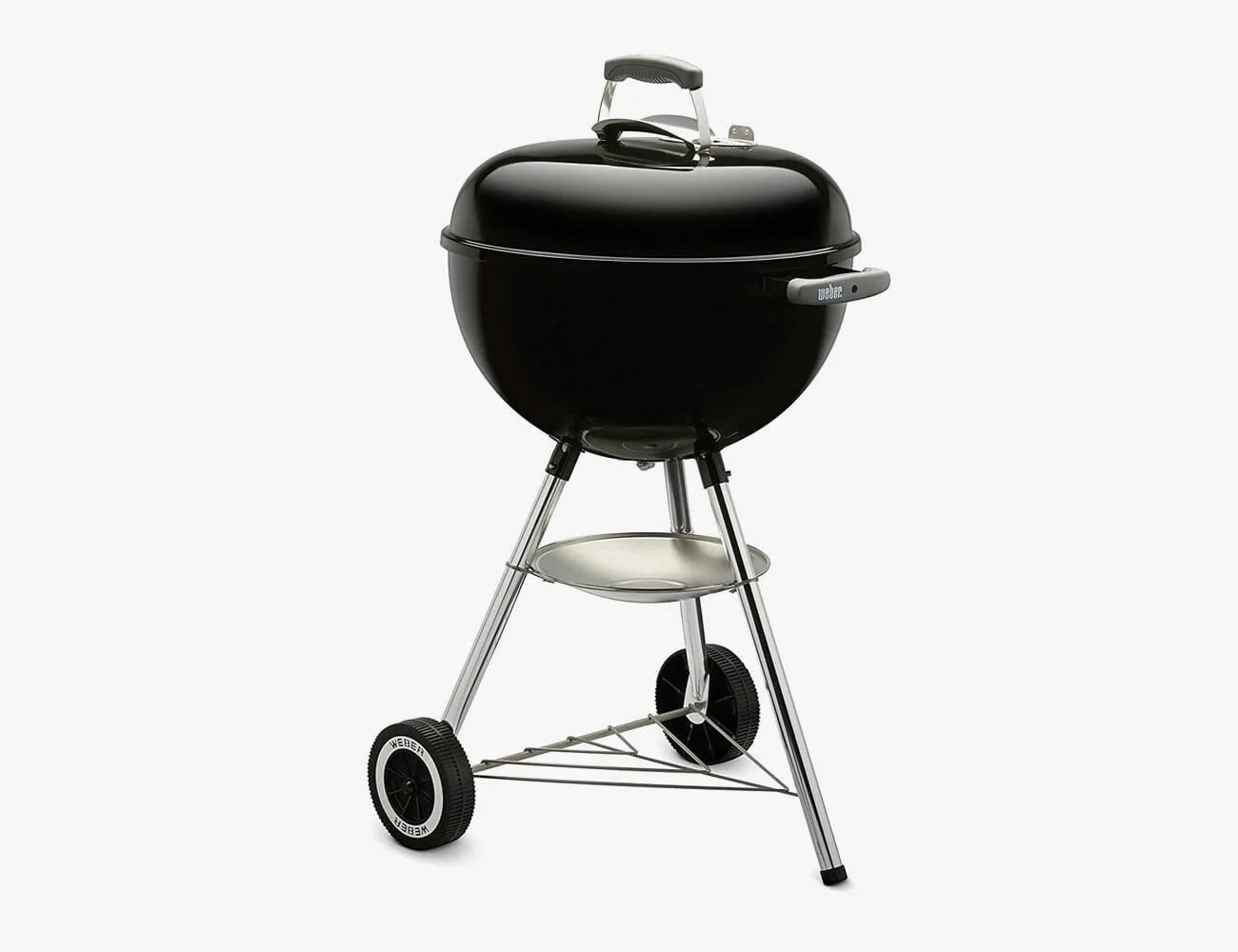 Weber
WeberBest Budget Charcoal Grill
Weber Original Kettle Charcoal Grill
Pros
- Extremely durable
- Stainless steel grates
- Stupidly good price
Cons
- Ash catch is a bit messy
- Sizes: 18 inches, 22 inches
- Materials: Porcelain-enameled steel housing, steel grates
Materials, manufacturing and brand legacy all considered, it’s shocking the original Weber is still this affordable. The 22-inch staple is made with the same enameled steel as the Premium version and offers the same 363-inch cooking space (between 15 and 20 burgers worth of space), but it lacks the easier-to-clean ash catch. It’s not a huge issue, given the competition for a charcoal grill of this size is mostly rinky-dink Amazon brands that don’t have customer service lines, strong warranties or any real reputation. If you’re dead set on a cheap grill and go for something other than the Weber original you’re doing so in an effort to be different, not have a better grill.
Kamado Joe Konnected Joe
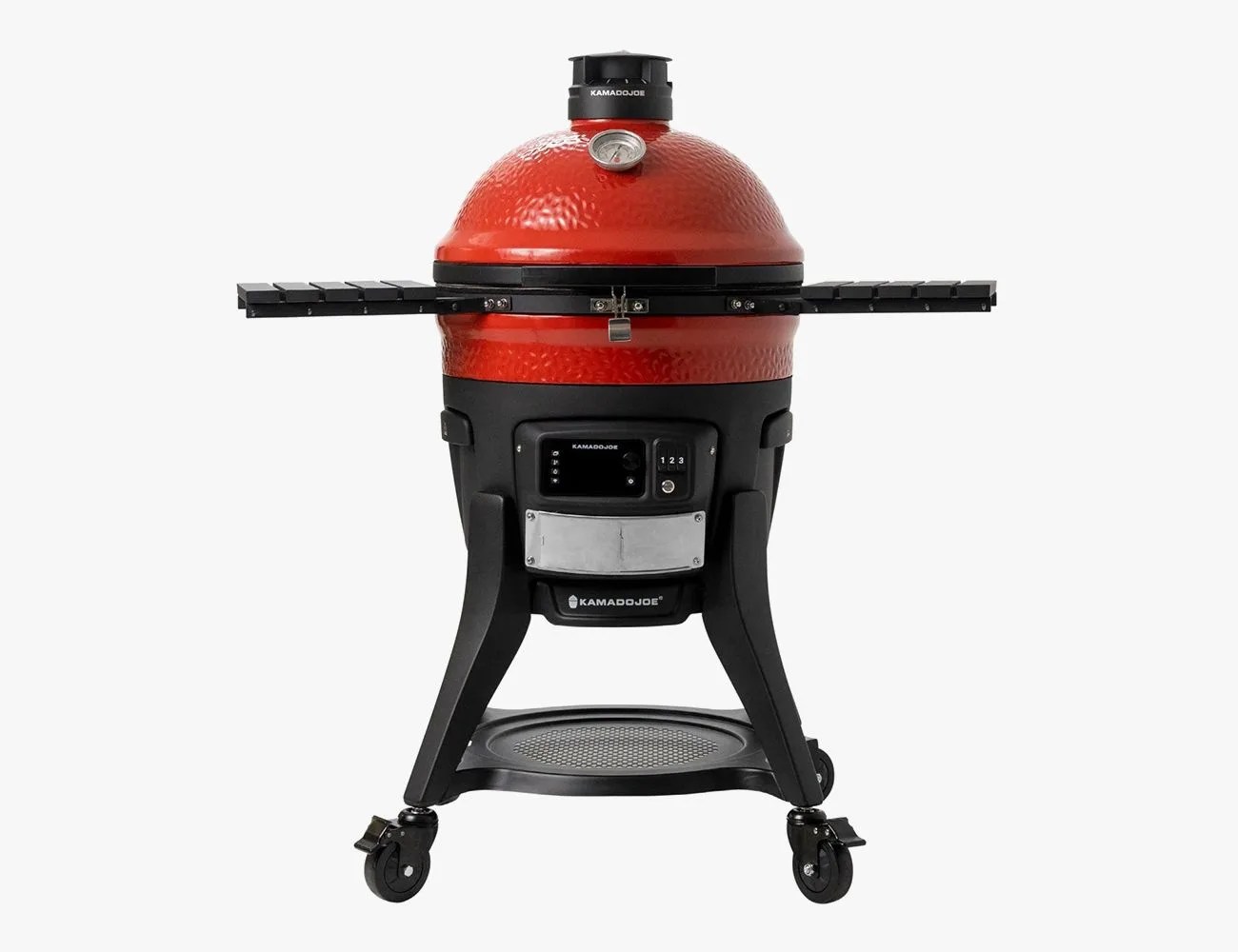 Courtesy
CourtesyBest Smart Charcoal Grill
Kamado Joe Konnected Joe
Pros
- Precise and oven-like temperature regulation
- Easy clean-up
- Automatic lighting system requires no lighter fluid
- Tons of accessories and customization options
Cons
- Assembly is a multiple-person job
- Large and heavy
- Needs access to an outlet
- Size: 18 inches
- Materials: Ceramic housing, stainless steel grates
The Konnected Joe keeps the charm of cooking on a ceramic charcoal grill. But it makes the process simpler and more precise, eliminating a lot of the rigmarole. It uses an automatic starter coil, which eliminates the need for lighter fluid or a lighter. In our testing, the grill heated from an ambient 68ºF to above 400ºF in about 10 minutes. A smart system adjusts the ventilation to keep the temperature there (or wherever you set it). The ash also burns through and neatly falls down into a removable tray for easy clean-up.
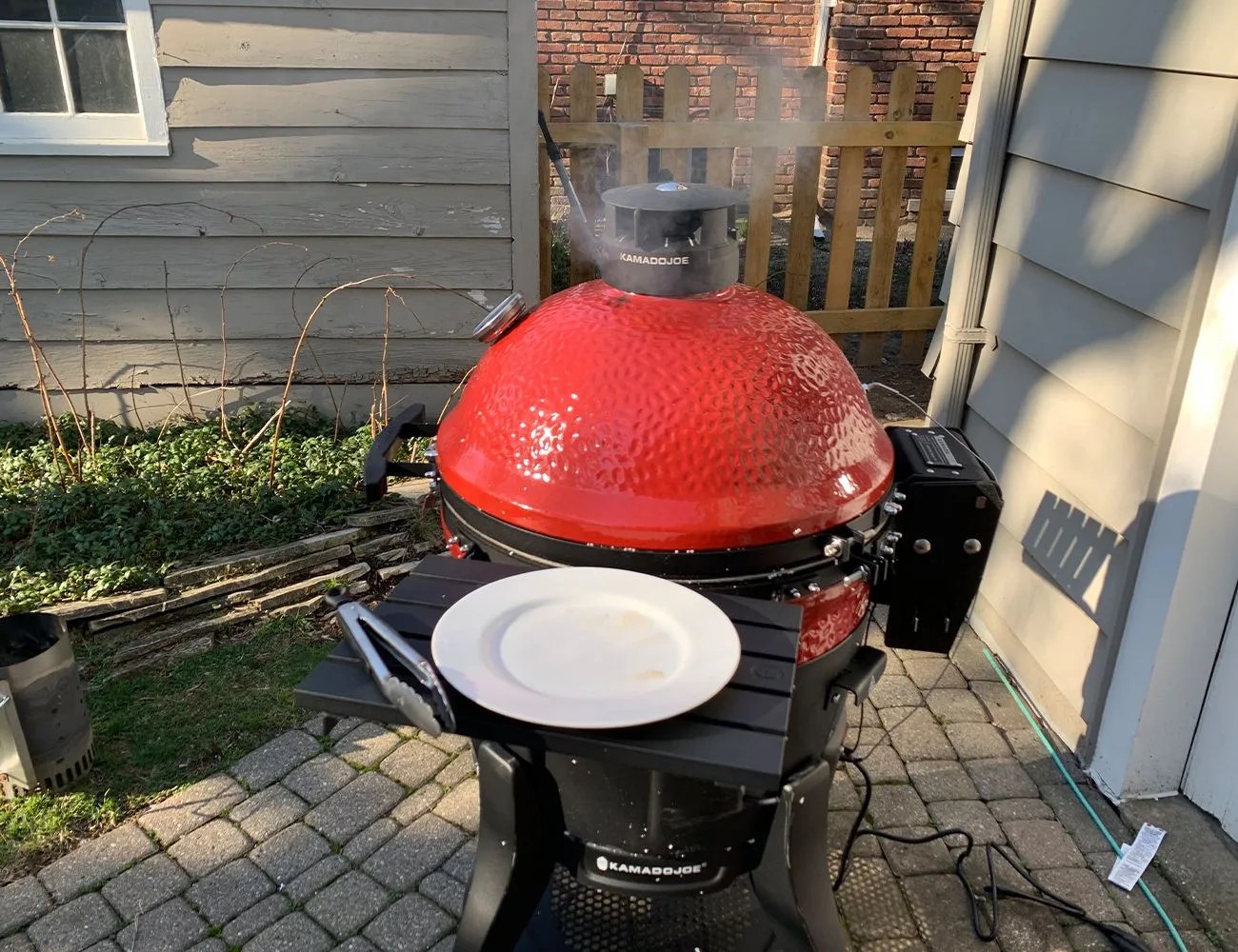 Tyler Duffy
Tyler DuffyPrecise temperature management led to — in our tester’s opinion — better cooking. He was able to cook sausages through and impart a bit of smokey taste without burning them. Heat deflectors and a range of accessories allow you to customize the grill easily to what you are cooking. Plus, since this grill is “Konnected,” you can use the Kamado Joe app to adjust your temperature and cook times, as well as monitor your meat probes.
One drawback of the Konnected Joe is that it’s heavy. And instructions to drop it into the stand you’ve constructed with small holes aligned make assembly a two (or potentially more) person job.
Read our full review of the Kamado Joe Konnected Joe.
Kalamazoo K750GB Built-In Gaucho Grill
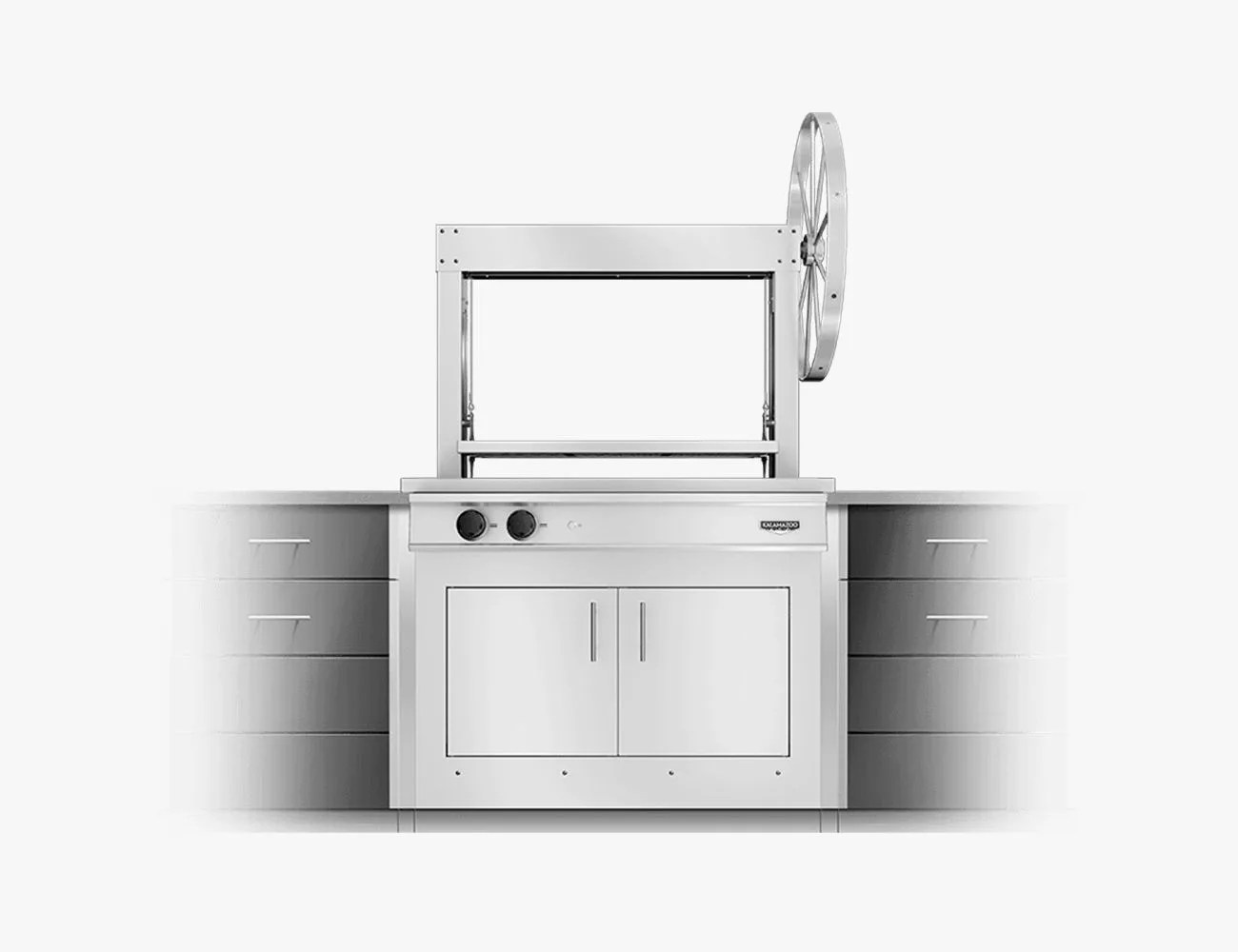 Kalamazoo
KalamazooBest Built-In Charcoal Grill
Kalamazoo K750GB Built-in Gaucho Grill
Pros
- Innovative wheel system gives you easy control over the height of your cooking surface
- Gas ignition means there's no messing around trying to light your charcoal
- Can use both charcoal and wood logs as fuel
- Features unmatched materials and craftsmanship
Cons
- At over $30,000, there's no other charcoal grill that comes close to being this expensive
- Size: 33 inches
- Materials: 304 or Marine-Grade 316L stainless steel housing, stainless steel cooking surfaces
Charcoal grills generally aren’t thought of as “showstoppers.” Most people are content with spending a hundred bucks on a Weber Kettle and calling it a day. But if you’re really looking to get the most capable, visually striking and unique charcoal grill on the market, then your only choice is Kalamazoo’s Gaucho. The premium outdoor kitchen brand is mostly associated with built-in units, but the Gaucho — like most of Kalamazoo’s line — is available as both a built-in and a standalone grill. The first thing you’ll notice about the Gaucho is that giant wheel on its side. The grill is inspired by Argentinean live-fire grills, and that massive wheel offers an easy way to raise and lower the 726 square-inch cooking surface over the flames. The wheel’s large size makes it easier to reach and offers the utmost control — our tester found it incredibly simple to use, with an extremely premium feel.
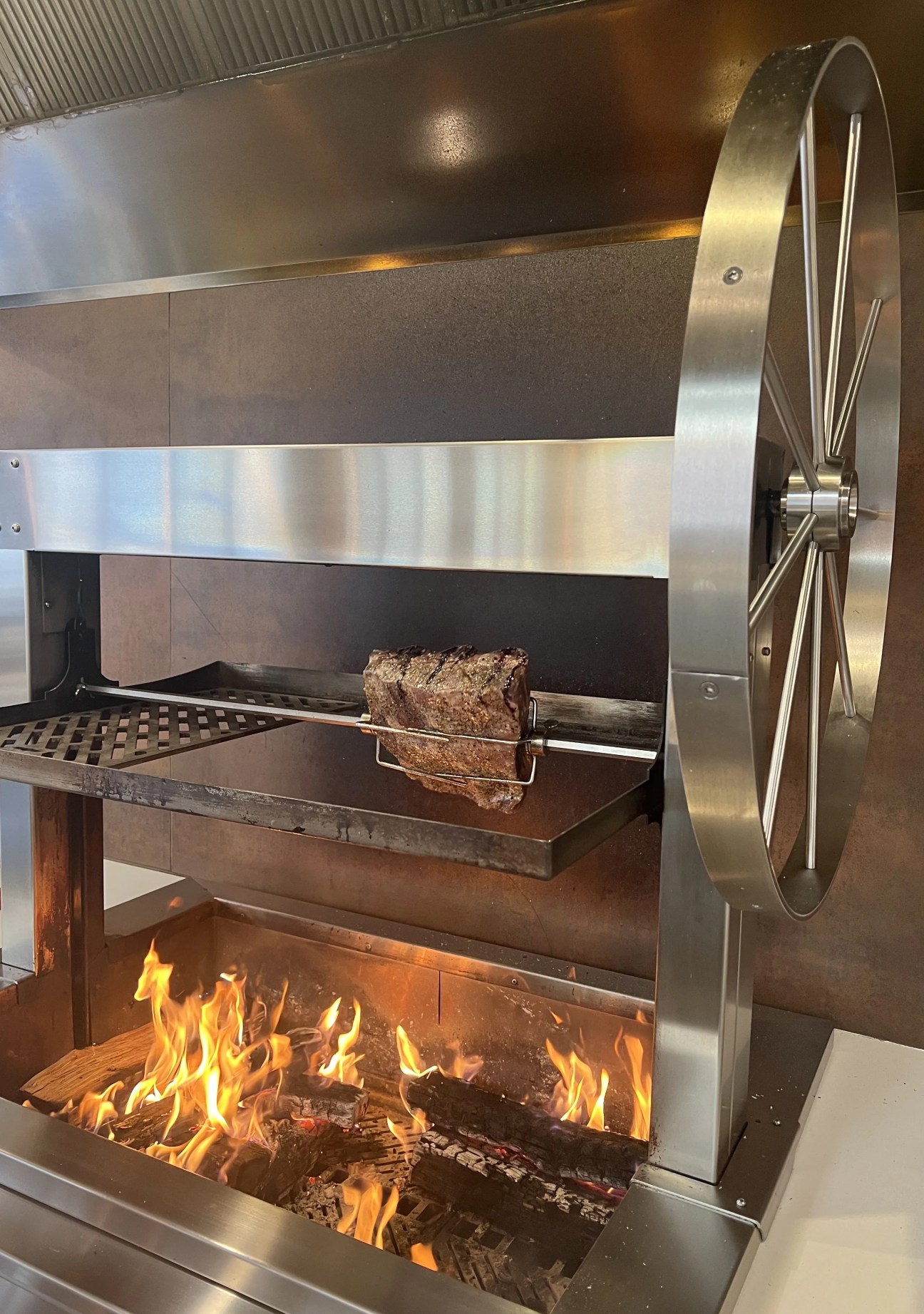
Like all of Kalamazoo’s grills, the Gaucho is handmade at the brand’s Michigan facility from some of the best stainless steel on the planet (you can opt for Marine Grade if you live by the ocean) — the brand has been making stainless steel since 1906, nearly a century before it got into the grill business — and everything from the engineering to the welding to the tolerances involved are all top-notch. The Gaucho is a breeze to light thanks to a pair of gas-powered burners, and the massive firebox can be filled with charcoal or wood — and not puny wood pellets, but full-on logs like you’d use in a fireplace. This allows you to cook over your choice of fuel to get your preferred flavor, and the ingenious rachetless wheel system allows you to easily fluctuate between gentle and intense heat on your cooking surface with between two and two-and-a-half feet of vertical space to play with.
Instead of traditional grates, the Gaucho uses Kalamazoo’s laser-cut stainless steel plates that are removable and that come with different cutouts for cooking meat, fish and veggies. The grates hold heat extremely well, are easy to clean, have holes small enough that you don’t have to worry about losing any food and food sticks to them less than on traditional grates. There’s also a built-in motorized rotisserie included with the Gaucho, and our reviewer says the sight of meat spinning on the rotisserie above a leaping bed of flames next to the massive control wheel creates a wondrous sight unlike anything else in the grilling industry. Our tester was amazed at how easy and quickly the wheel allowed him to go between temperature zones on the Gaucho, and he found the flavors produced from a wood fire — especially for food cooked slowly high above the flames — simply couldn’t be replicated on other grills he’s tried. But, this high-end experience comes with a high-end price tag. The Gaucho starts at more than $30,000, which is a tough pill to swallow (if not an outright impossibility) for most people.
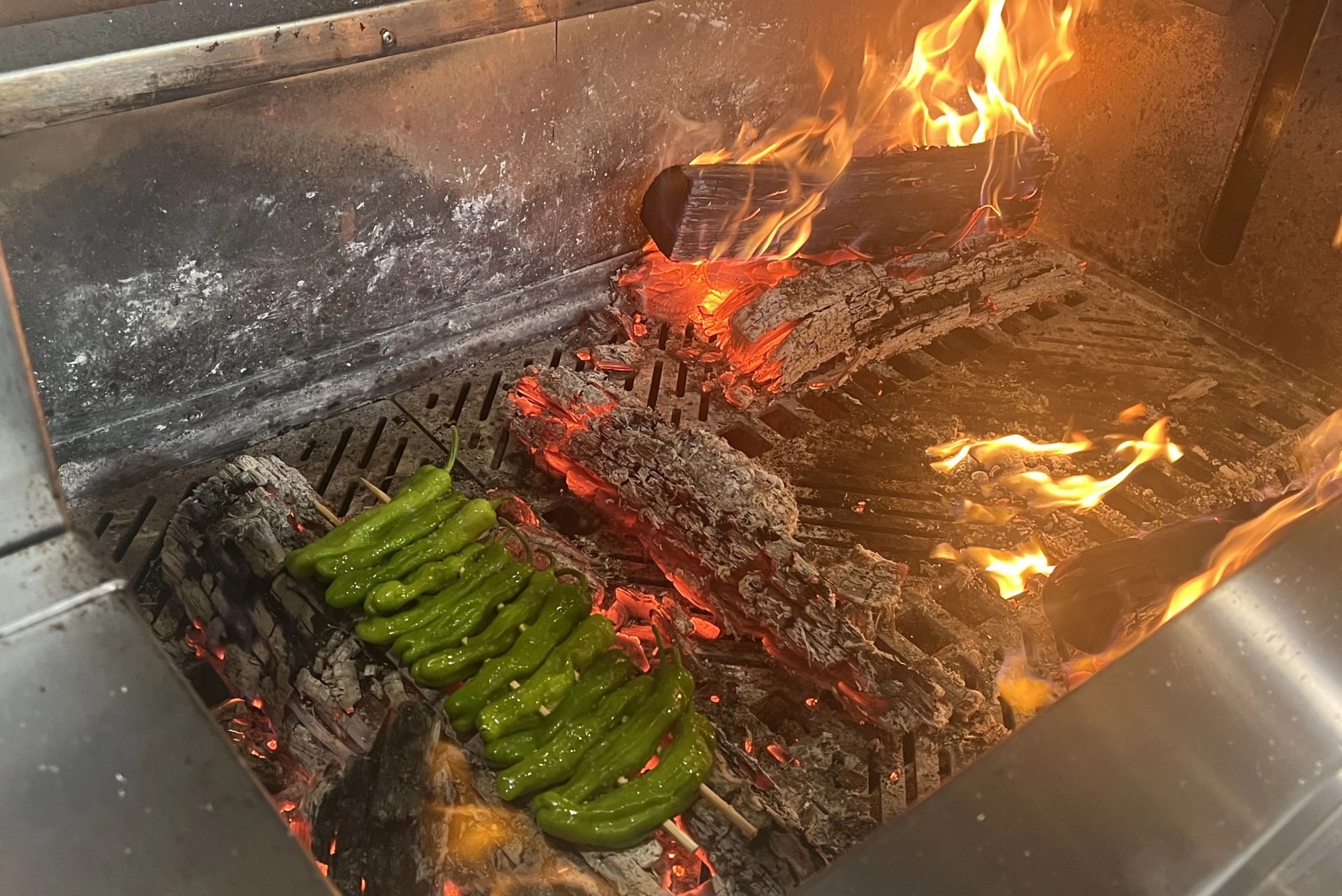
Burch Barrel
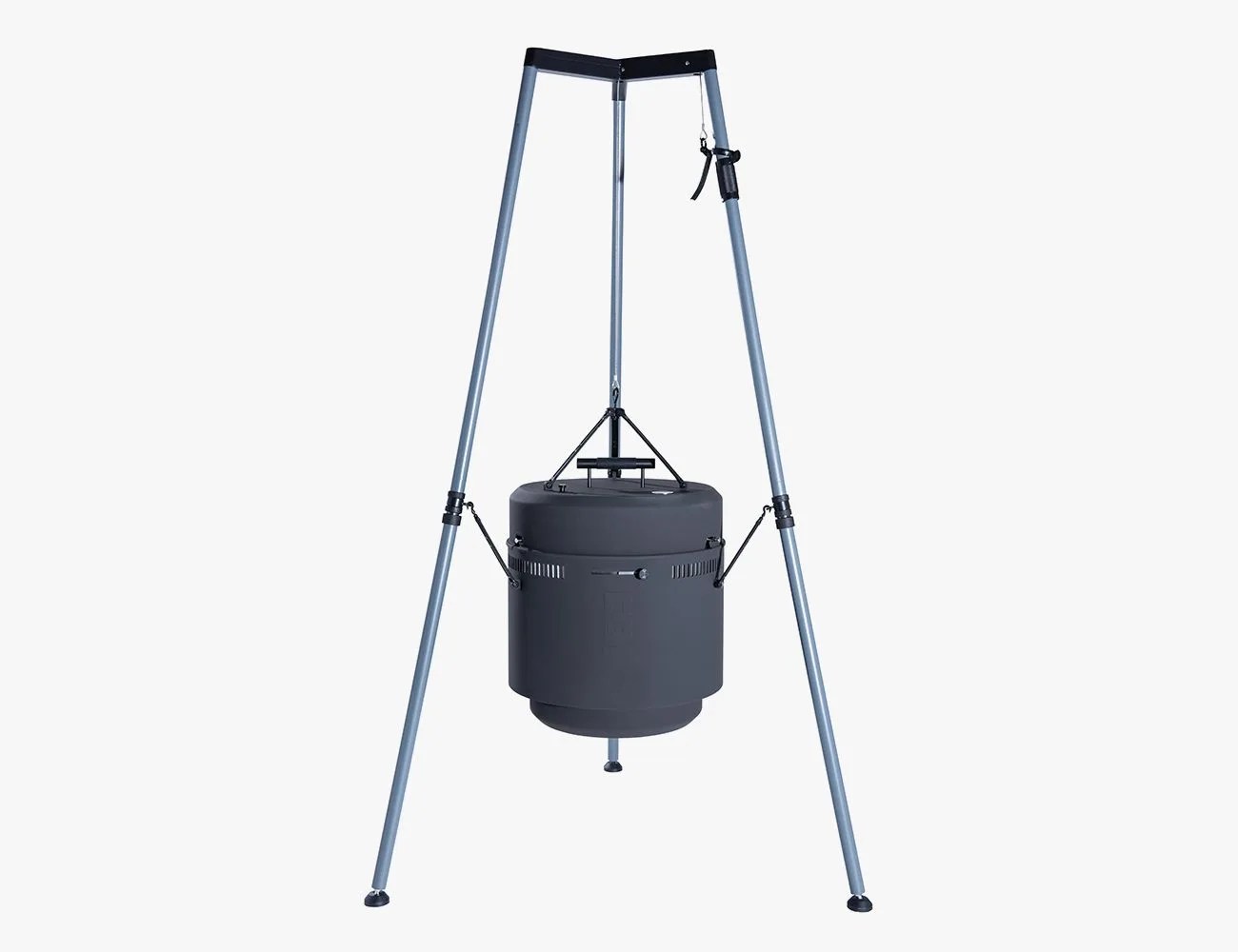 Huckberry
HuckberryBest Charcoal Grill for Entertaining
Burch Barrel
Pros
- Fun to use and 360-degree grilling opens up the experience
- Efficient venting and gets very hot
- Works with multiple fuel types, all of which are easy to load
- Doubles as a fire pit
Cons
- Takes up a lot of space
- More involved cooking process compared to other grills
- Setup takes a while
- Size: 18 inches
- Materials: Cold-rolled steel housing, stainless steel grates
The Burch Barrel delivers a unique grilling experience thanks to its suspended firepit design. Our tester hosted many grill-outs at her house and she says the Burch Barrel made the experience a lot more fun compared to using a standard grill. One reason for this is the tripod design that allows for a 360° approach to grilling — our tester’s favorite feature — which made the grilling experience much more social (compared to having your back turned to your guests with a traditional grill). The design also made it much easier for sous chefs to assist with adding/taking things off the grill. As a host, our tester felt more connected with her guests and had a much better evening because of that design.
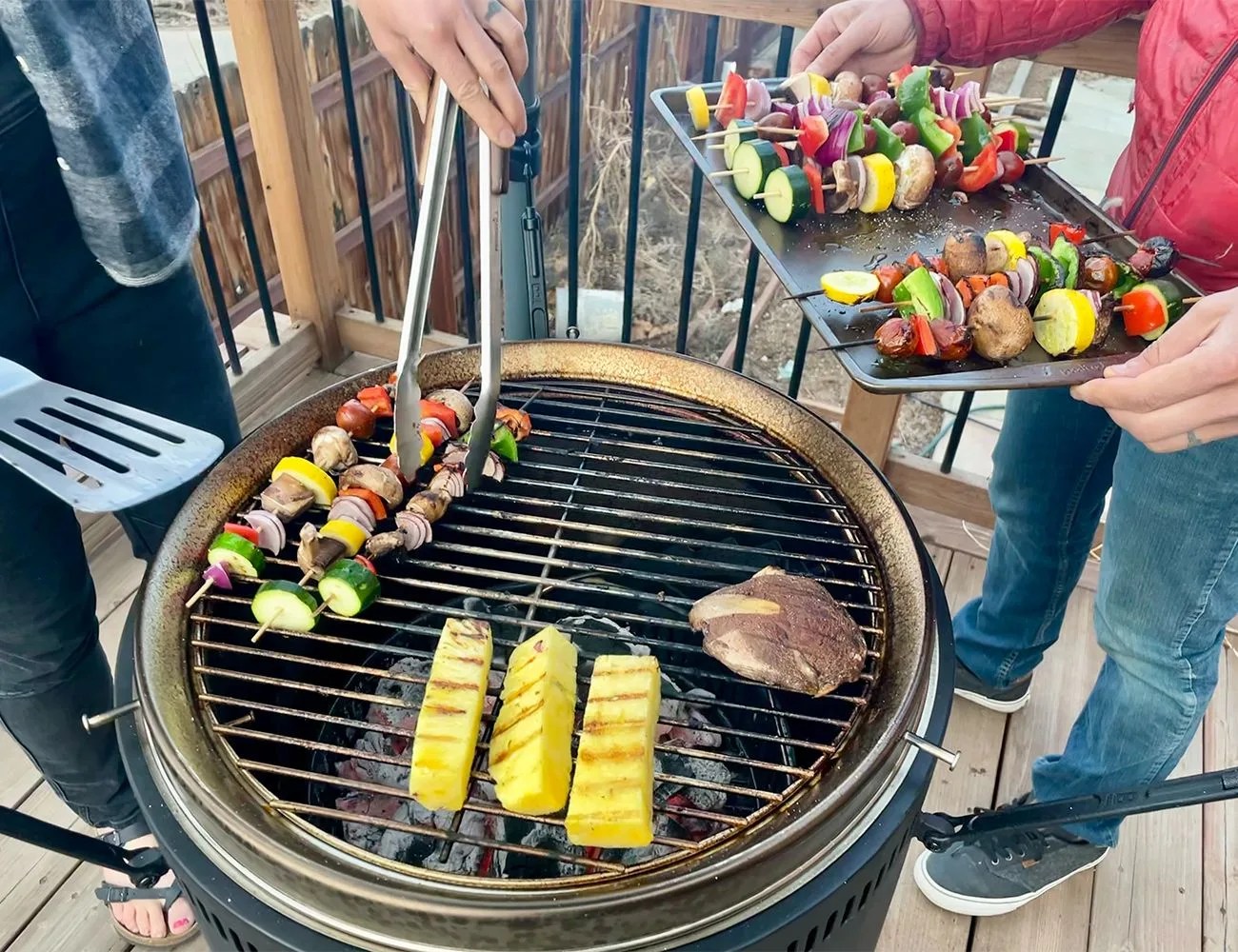 Jeni Arbuckle
Jeni ArbuckleThe Burch Barrel can also grill with any type of wood or charcoal, and our tester says any fuel is super easy to add. She also described the grill’s venting as very efficient and cautioned going with a “less is more” approach when adding charcoal since it heats up easily. Our tester also liked how the tripod legs allow for level cooking on uneven surfaces, like a backyard or stone patio, as well as the fact that it doubles as a fire pit (albeit a tall one) — post-grill coals are ideal for marshmallow roasting and/or standing around the fire with a beer. The temperature is easy to control, either by moving the coal pan up and down within the drum or by raising and lowering the grill plate itself via a pistol grip slider after locking it into the lid.
On the downside, the grill does take up a ton of space, and while it does come apart, it’s still on the heavy side so moving it can be a chore. Our tester also notes that the cooking process tends to be a bit more involved than with a traditional charcoal grill.
Big Green Egg
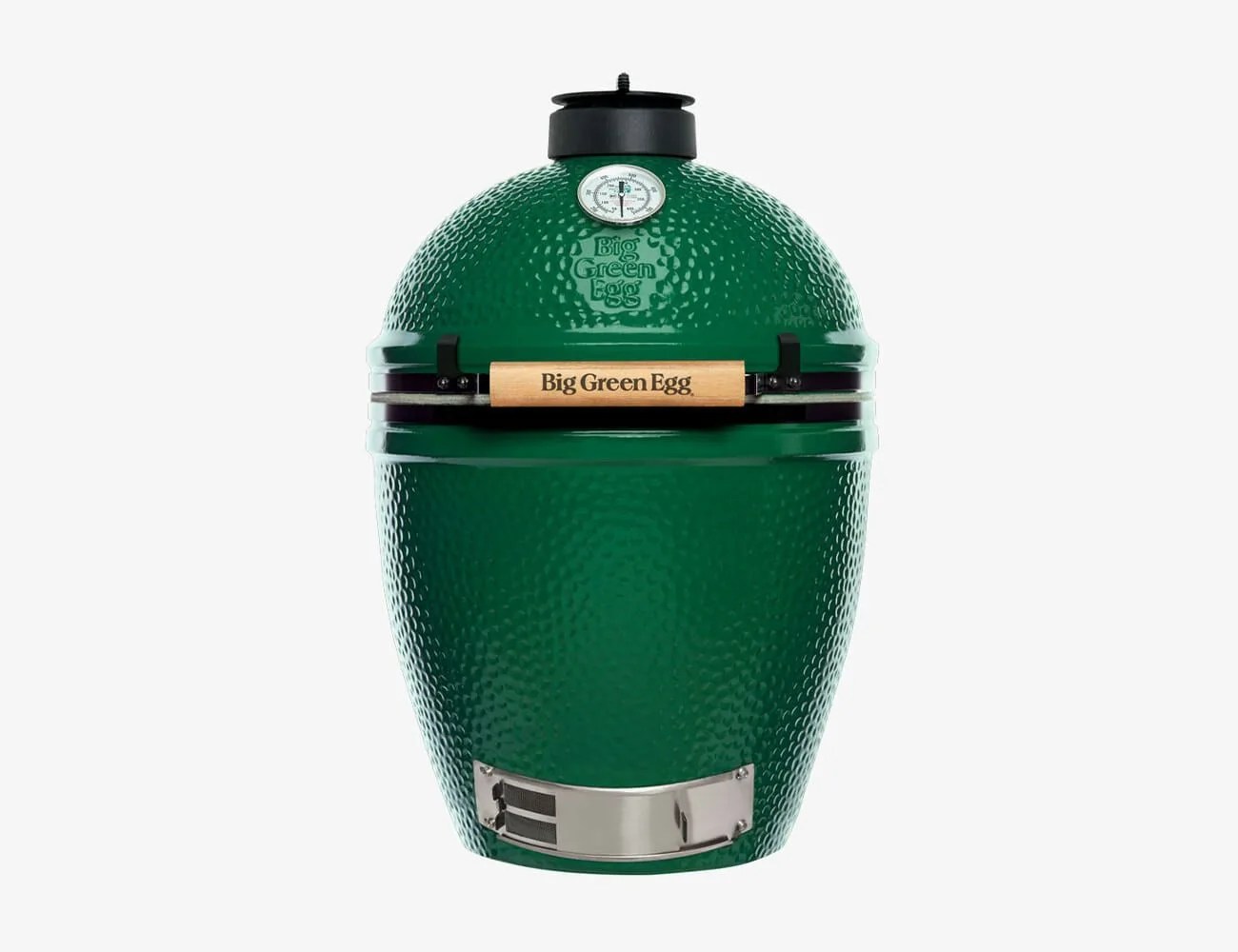 Ace Hardware
Ace HardwareBest Kamado-Style Charcoal Grill
Big Green Egg Large Charcoal Grill and Smoker
Pros
- Legendary design will make your neighbors jealous
- Superb insulation
- Precise temperature control
Cons
- Lid is heavy and could be easier to handle
- Sizes: 10 inches, 13 inches, 15 inches, 18.25 inches, 24 inches, 29 inches
- Materials: Ceramic housing, stainless steel grates
No charcoal grill in existence is guaranteed to make your neighbors green with envy quite like a Big Green Egg (pun intended). The poster boy for premium charcoal grills for nearly 50 years, this legendary egg-shaped hunk of ceramic lives up to the hype. It reaches temperature in minutes, and with its outstanding insulation, patented air vents and built-in thermometer, you’re able to control your cooking temperatures with the utmost precision. Its exterior doesn’t get hot like metal grills (thanks again, insulation), and it’s easy to clean too.
Perhaps the biggest negative on the BGE is the lid. It’s big and heavy, and while its opening is assisted, it’s still kind of a pain to deal with.
Napoleon Charcoal Professional Grill
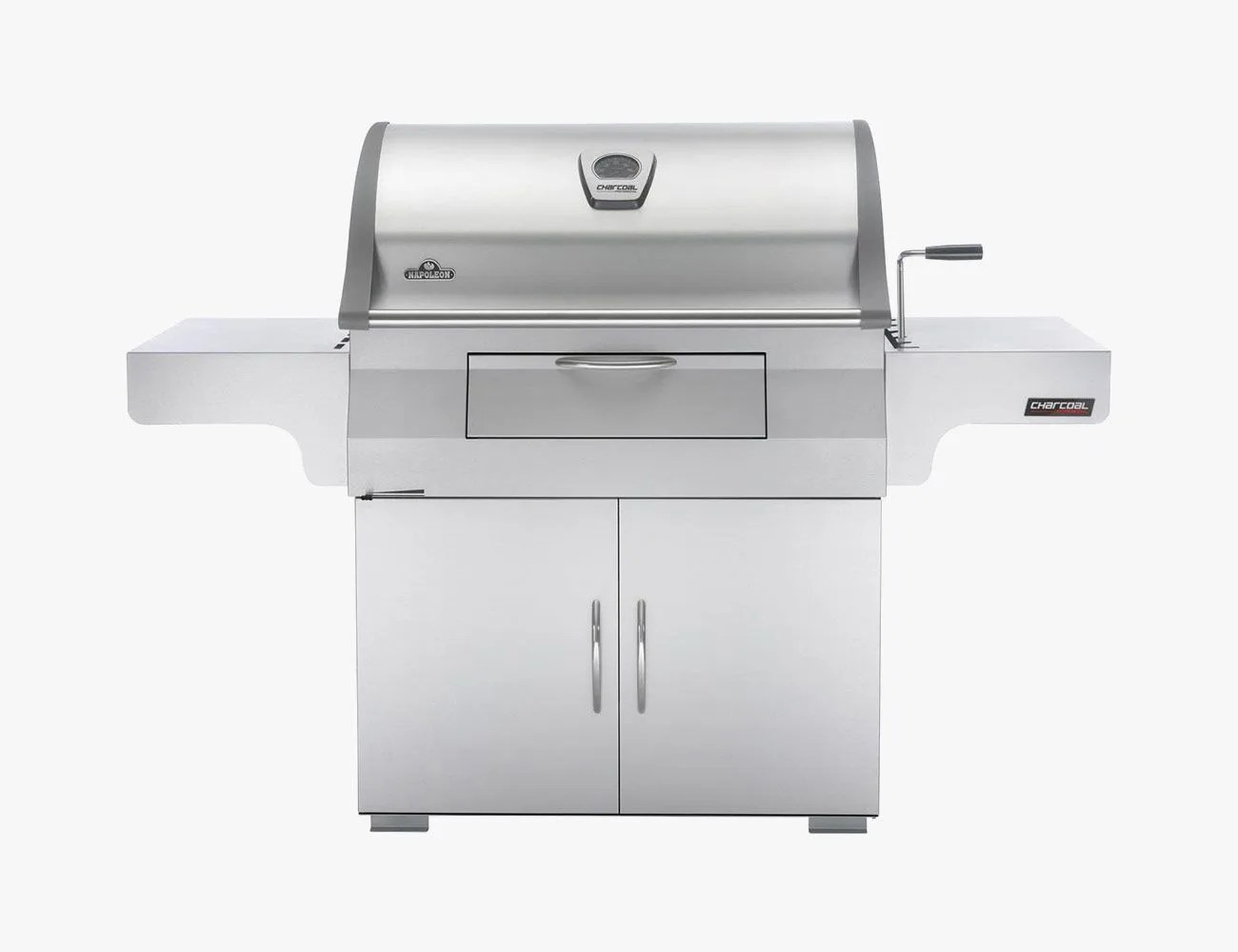 Napoleon
NapoleonBest Freestanding Charcoal Grill
Napoleon Charcoal Professional Grill
Pros
- Adjustable air vents
- Includes a rotisserie
- Huge cooking area
Cons
- Looks like a gas grill — but it's not
- So-so temperature control
- Size: 33.75 inches
- Materials: Stainless steel housing, porcelainized cast-iron grates
If you’re committed to charcoal but want that shiny gas grill vibe, Napoleon is probably your safest bet. Napoleon is primarily a gas grill maker, but its glossy stainless steel charcoal grill is exceptional, and it’s one of very few high-end charcoal grills that have that new look. Other than its highly durable build, the grill ticks all the boxes: variable coal bed height, sturdy grates and (relatively) easy cleaning. Some will be fond of Napoleon’s staple “wave” grate design.
Yoder Smokers Abilene
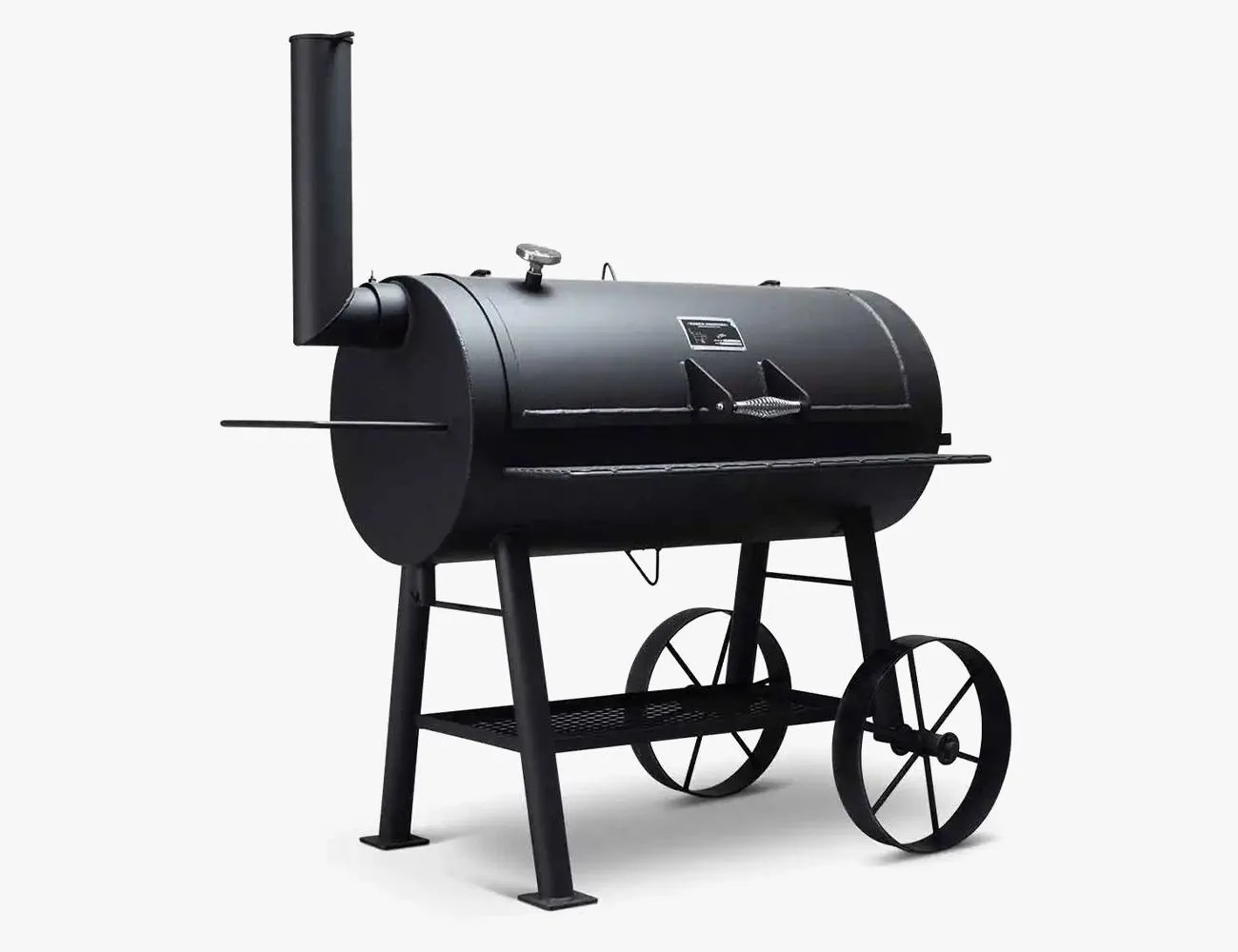 Yoder Smokers
Yoder SmokersBest Charcoal Grill and Smoker
Yoder Smokers Abilene
Pros
- Huge cooking space
- Removable charcoal grate
- Built to last
Cons
- Super heavy
- Size: 20 inches
- Materials: Steel housing, steel grates
A 375-pound charcoal grill with more than 700 square inches of cooking space and perfectly placed vents make the near-perfect party grill. Removable cooking grates are standard fare, but being able to remove the charcoal grate is a huge help with cleaning a grill this size. One last thing: the wagon-style wheels are made of the same heavy-as-shit stainless steel as the grill body, meaning they won’t casually crack or break down like many others.
PK Grills OriginalPK PK300
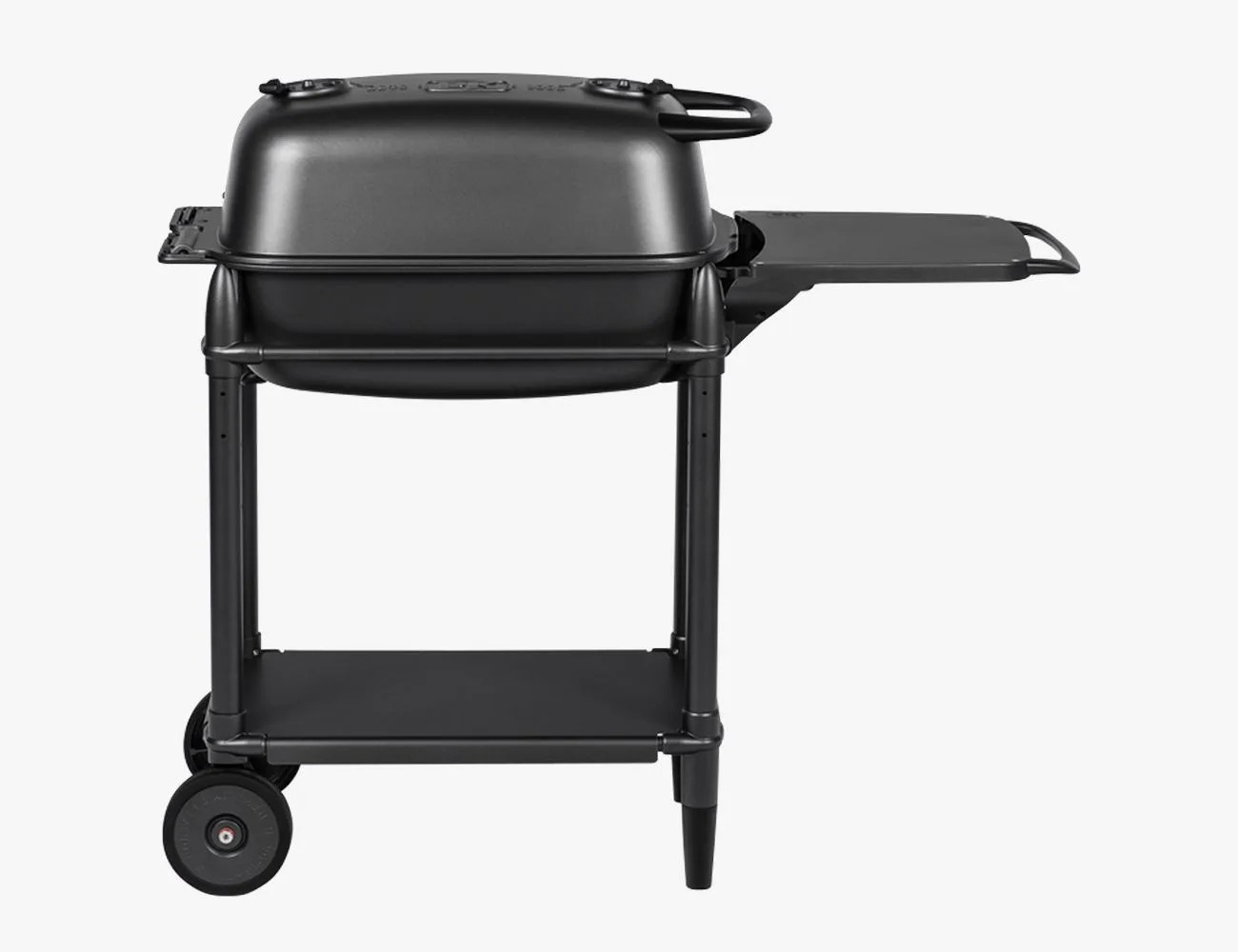 The NEW PK300 Slim Cover
The NEW PK300 Slim CoverBest Charcoal Grill and Smoker for Beginners
PK Grills OriginalPK PK300
-
$699.99 (25% off)
Pros
- Heats up quickly
- Hinged cover
- Adjustable vents for easy temperature control
Cons
- Setup instructions can be confusing
- Size: 22.35 inches
- Materials: Aluminum housing, nickel-plated steel grates
In 2022, PK Grills unveiled a new version of its OriginalPK Grill and Smoker — so naturally, we tested it out. In our tester’s words, after using this grill for a few weeks she went from a rookie charcoal griller who had only flipped burgers and cooked veggies in tin foil to being confident in “using two-zone cooking, indirect, and direct heat to make smoky, juicy pork ribs.” If that isn’t an endorsement, we don’t know what is.
Our tester loved the compact size of this grill. That obviously translated to a slightly smaller cooking area than what you might be used to, but if you have a small space where you’re looking to do your grilling then you’ll be happy with the grill’s compactness. Its size also makes it easy to transport, and our tester appreciated the durability of the grill. Its capsule is rustproof and PK backs it with a 20-year warranty, so you can count on the grill looking great for years to come.
As far as the cooking experience, this grill offers four adjustable vents, a hinged lid and a hinged cooking surface — all of which aided our novice tester, making it easier to adjust the temperature, add fuel and tend to her meals. Really the only thing our tester didn’t care for about this grill was the lengthy and complex setup (you’ll want help).
Read our full review of the PK Grills OriginalPK PK300.
Hasty Bake Legacy 131 Charcoal Grill
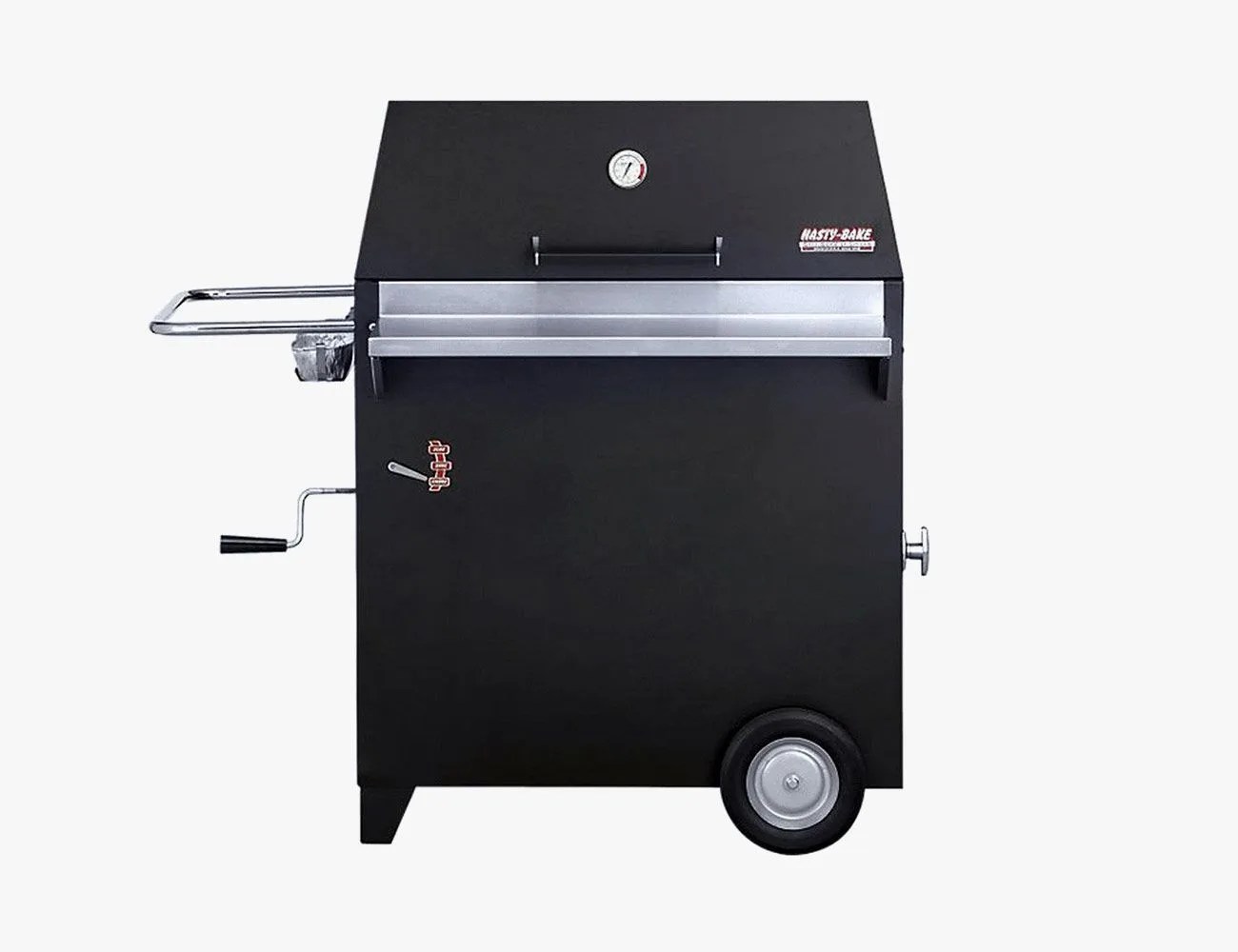 BBQGuys
BBQGuysBest Professional Charcoal Grill
Hasty Bake Legacy 131 Charcoal Grill
Pros
- Parts are backed by a five-year warranty
- Heat gets recirculated instead of being released
- Built to last
Cons
- Expensive compared to the competition
- Sizes: 21 inches, 28 inches
- Materials: Powder-coated steel housing, nickel-plated steel grates
Lauded by professional chefs, Hasty Bake charcoal grills ride the line between commercial and residential use in their functionality and no-bullshit aesthetic. The company made its first grill — then called a charcoal oven — in 1948 and has been making them non-stop since. From a construction perspective, the grill is a beast. Loads of 18-gauge powder-coated stainless steel make up the body, and the grates are nickel-plated steel. Parts come with a five-year warranty, too. A quirk: the grill has a ventless hood, which changes … a lot. Instead of smoke and heat flowing up through the coal bed and out the top of the grill, heat rises to the top of the lid, where it meets a heat deflector, which recirculates the heat. This means hotspots are a rarity and creates what amounts to a charcoal convection oven.
Everdure by Heston Blumenthal HUB
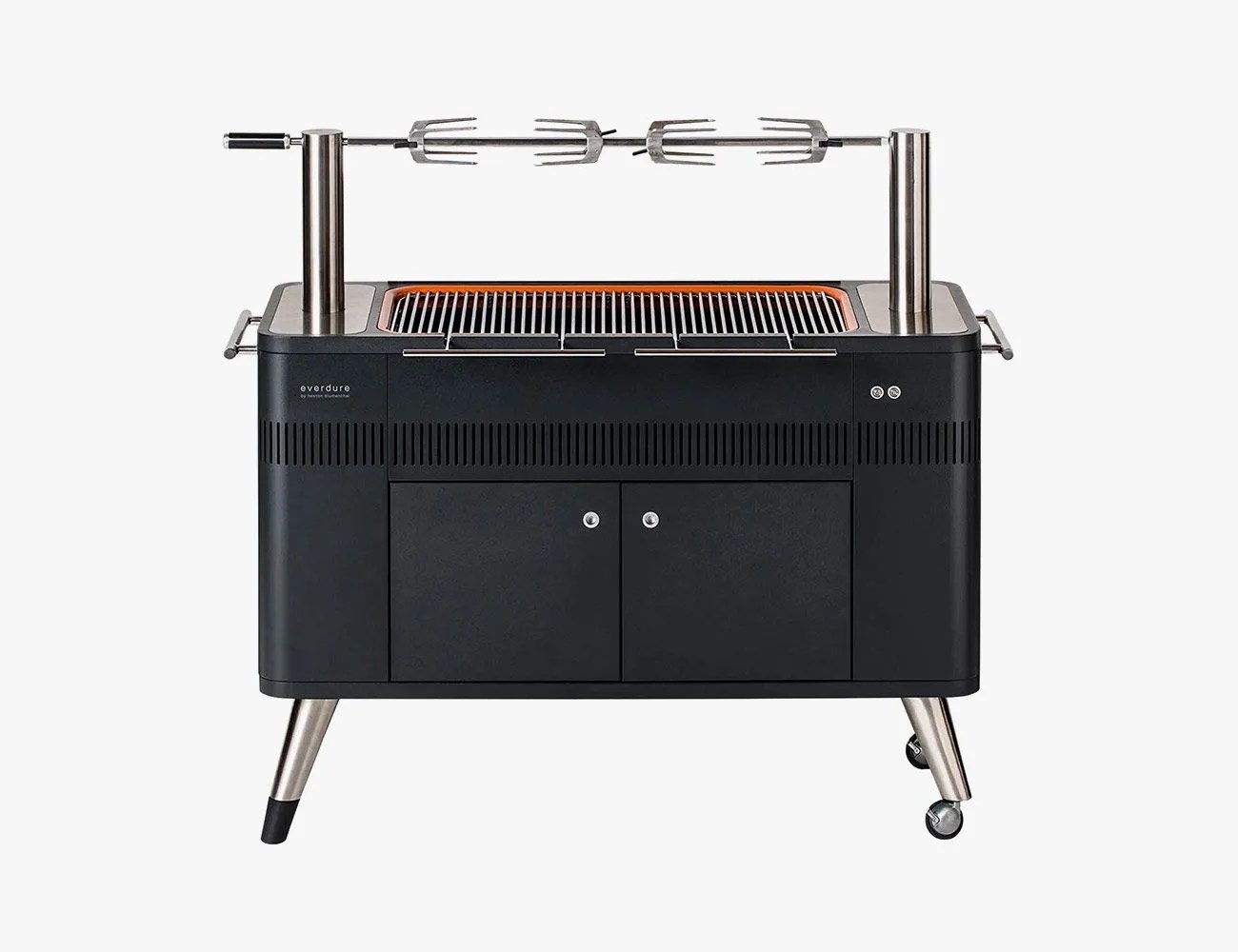 Amazon
AmazonBest Flex Charcoal Grill
Everdure by Heston Blumenthal HUB
-
$2,299.00 (8% off)
Pros
- Easy to ignite
- Built-in rotisserie
- Beautiful design
Cons
- Crazy expensive
- Size: 54 inches
- Materials: Titanium-coated steel body, chrome grates
The new-ish Everdure brand is the brainchild of Michelin-starred UK chef Heston Blumenthal. Its Hub grill targets pain points in the charcoal grilling process and addresses them with features like electric charcoal ignition and chrome grates that are easy to clean. It’s also got a built-in rotisserie over the grates, which few charcoal grills offer as a standard. This is the grill you get to show off a bit and keeps your hands clean. A downside: compared to most brands in this guide, Everdure has very few stockists, which means it may be tough to get hands-on with one before dropping two grand.
Texas Original Pits Corsicana
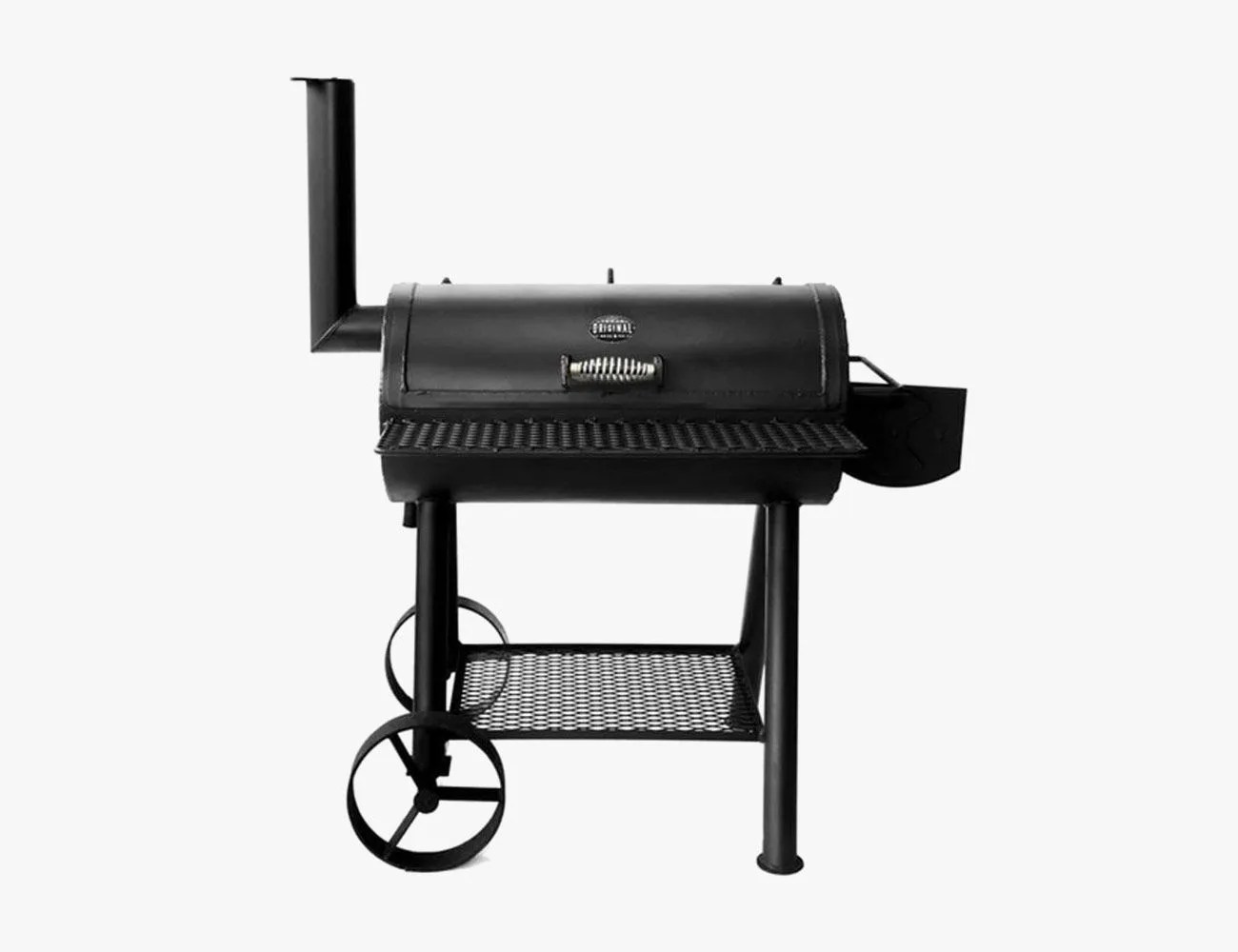 BBQGuys
BBQGuysBest Wood-Compatible Charcoal Grill
Texas Original Pits Corsicana
Pros
- Works with wood or charcoal
- Easy to use
- Excellent heat retention
Cons
- Heavy
- No side shelf
- Sizes: 36 inches, 42 inches
- Materials: Painted steel housing, expanded steel grates
Texas Original is known for its smoking pits and sturdy built quality. Naturally, that lends itself to the brand making just-as-good charcoal grills. With its generously sized 750-square inches of cooking surface, the Corsicana offers up to 600 degrees Fahrenheit of wood-fired or charcoal-powered grilling. Its side-mounted exhaust tank is a helpful addition, while cleanup is a breeze with-a two-inch grease drain pipe and a contoured ash clean-out tool.
Weber Go-Anywhere Portable Grill
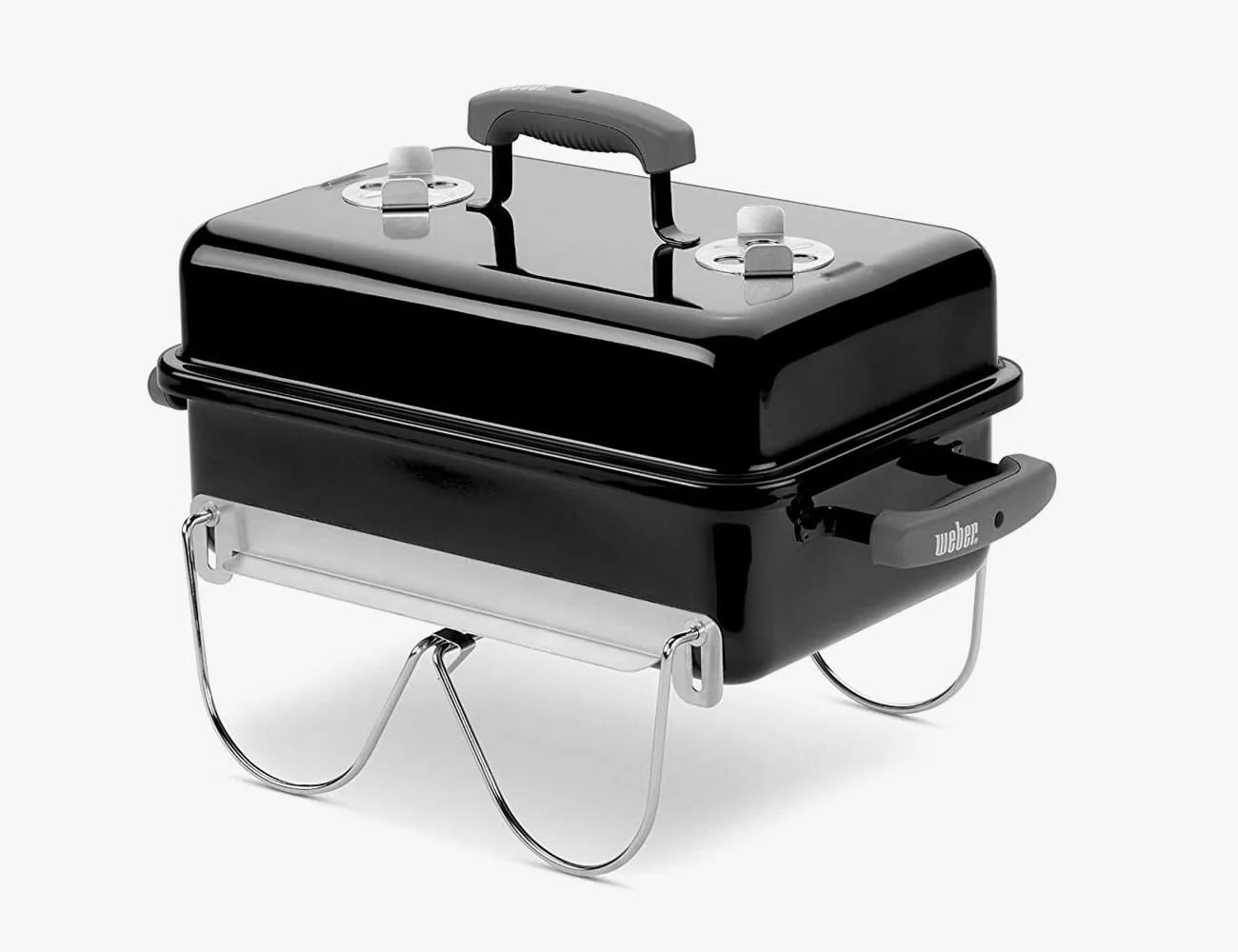 Weber
WeberBest Portable Charcoal Grill
Weber Go-Anywhere Charcoal Grill
Pros
- Extremely lightweight
- Breaks down easily
Cons
- Must wait to pack it up after use as the body of grill gets extremely hot
- Size: 19.5 inches
- Materials: Porcelain-enameled steel housing, plated steel grates
The Go-Anywhere grill weighs 14.5 pounds, which is a featherweight in charcoal grilling terms. It’s large enough for six to eight burgers, two regular-sized steaks or one whole chicken. It is not a grill you’ll be able to effectively smoke or slow cook on consistently, but it offers a huge upgrade to camp dining. Because most of the places you’ll use this grill will necessitate packing light and thus not carrying a charcoal chimney, we recommend bringing a pack of lighter cubes with it wherever it goes.
Nomad Grill & Smoker
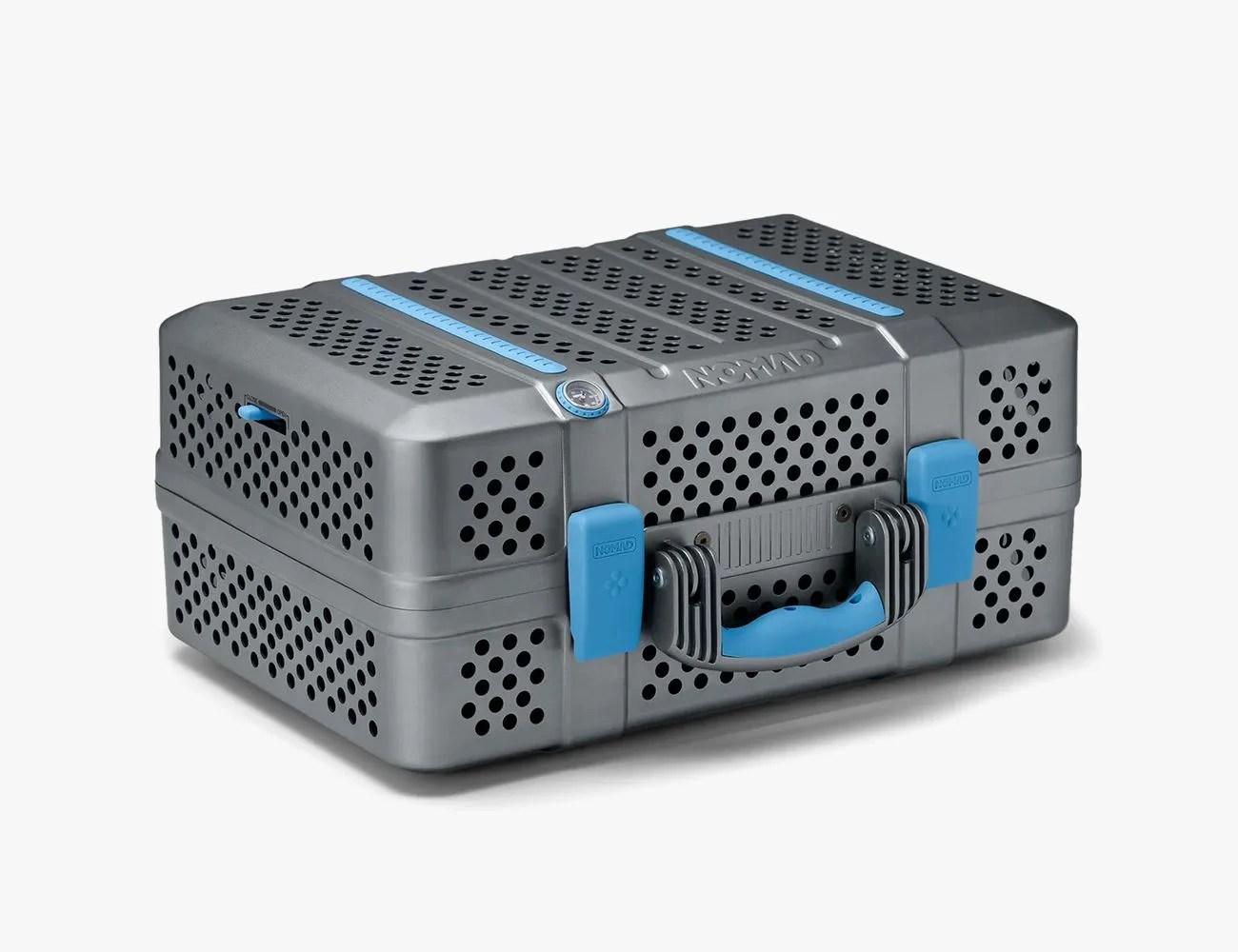 NOMAD Grills
NOMAD GrillsBEST UPGRADE PORTABLE CHARCOAL GRILL
Nomad Grill & Smoker
-
$695.00 (7% off)
Pros
- Weighs only 28 pounds
- Packs in 425 square inches of cooking space
Cons
- You'll need to purchase a separate chimney starter
- Size: 27.5 inches
- Materials: Anodized aluminum housing, stainless steel grates
Is it a briefcase? Is it a grill? It’s both! Nomad’s unique cooking gadget just might revolutionize how you grill when on the road. Weighing in at just 28lb and featuring a convenient carrying handle, the Nomad somehow packs in 425 square inches of total cooking space across its two diecast cookboxes. The anodized aluminum exterior stays cool enough to the touch to be used on a wooden picnic table, and the grill is packed with innovative features like domed stainless steel grates that offer improved durability and sliding magnetic vents.
While there’s a lot of innovation going on with the Nomad, there are still some areas where it’s lacking. Namely, you’ll need a chimney coal starter to heat your fuel before putting it in the grill. Nomad doesn’t include one with the grill, nor do they even sell one.
Nexgrill Cart Grill
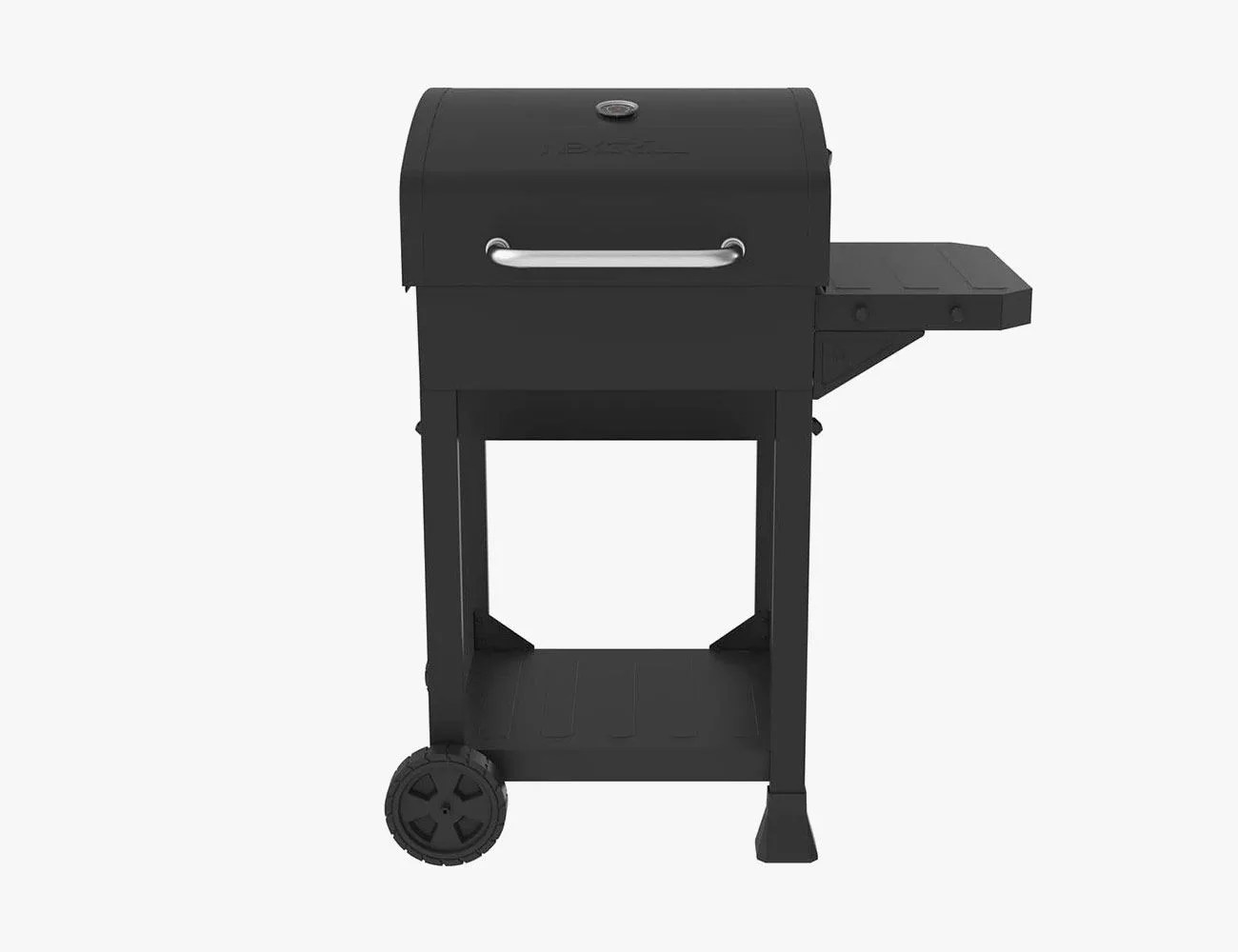 Home Depot
Home DepotBest Entry-Level Charcoal Grill
Nexgrill Cart Grill
Pros
- Ample grilling space
- Side table is a helpful addition
- Controlled airflow
Cons
- Short life; backed by a one-year warranty
- Size: 36 inches
- Materials: Powder-coated steel housing, porcelainized cast-iron grates
A $139 grill (that frequently goes on sale) that’s built of powder-coated steel, has porcelain-coated grates, comes with a trio of vents for controlled airflow and looks kind of decent? Sure enough. Nexgrill’s compact cart grill isn’t going to last forever and won’t be suited for large grill gatherings, but it’s got all the features needed for good grilling and entry-level smoking. Plus, it’s available at Home Depot.
Masterbuilt Gravity Series Grill
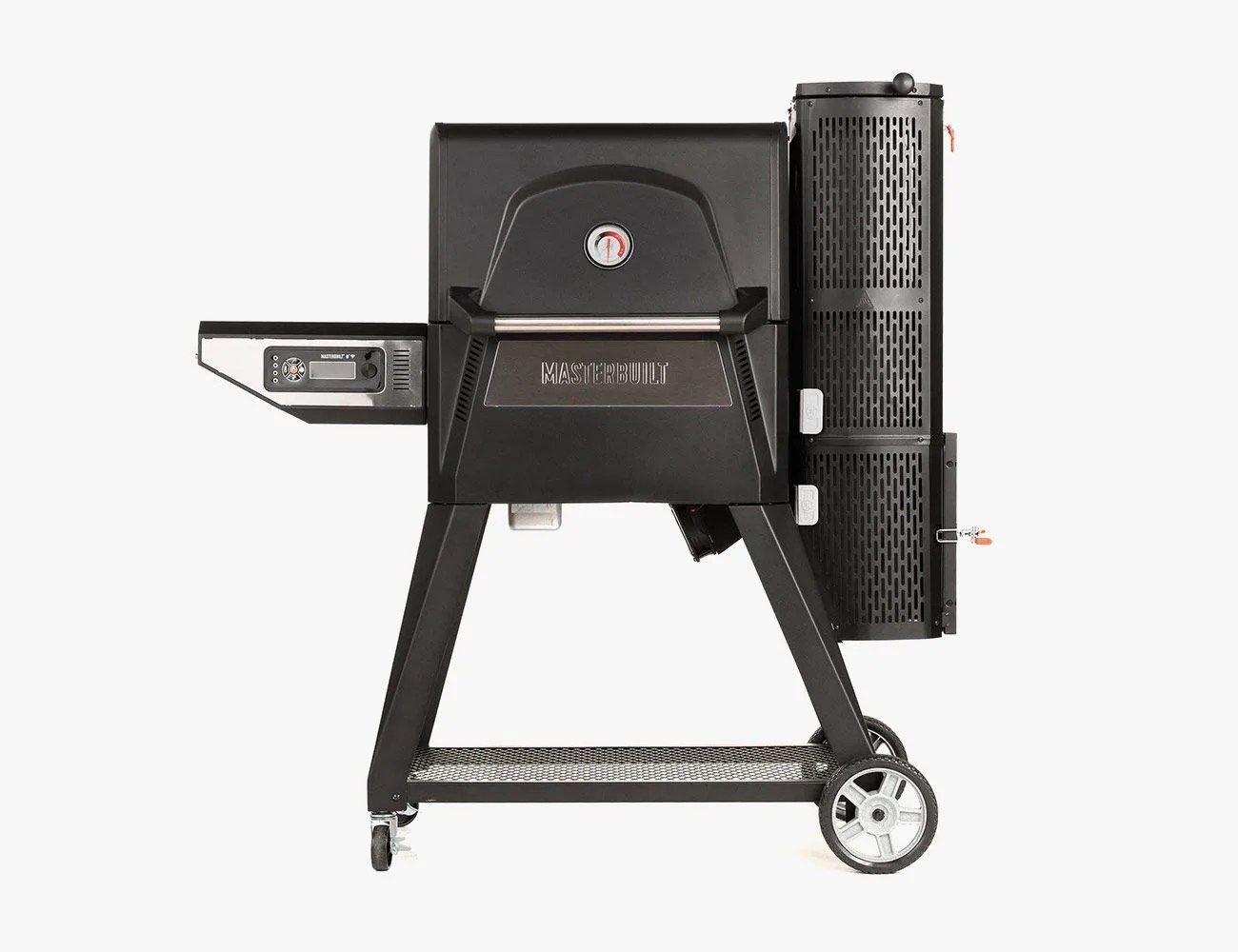 Walmart
WalmartBest Computer-Operated Charcoal Grill
Masterbuilt Gravity Series Grill
Pros
- Onboard computer offers precision grilling
- Holds enough fuel for 12-15 hours of grilling/smoking
- Heats up quickly
Cons
- Not built to last
- Size: 54 inches
- Materials: Painted steel housing,cast-iron grates
Masterbuilt’s charcoal take on a wood pellet grill is the most controversial charcoal grill on the list. Load coals in the hopper and play with the grill’s onboard computer — which controls temperature levels and airflow — to grill with precision without any experience. That functionality, which also enables the cook to go more hands-off (which means more time with the people you’re cooking for), is likely the future of grilling. The pain points are temperature maximum and construction. The former is significantly lower than your standard charcoal grill (just 700 degrees), and the latter is questionable at best, with some plastic and painted stainless steel that chips rather easily. Looking for something you can turn on in the morning and not come back to until dinnertime? This is it.
Why Buy a Charcoal Grill?
Pros of Charcoal Grilling
Ultra-high heat: other than commercial salamander burners (like this one), no grill type will reach the heat levels charcoal and wood-fired grills will. Expect maximum temperatures over 1,000 degrees Fahrenheit, reaching up to 1,250 depending on your setup.
Versatility: It gets hotter than hell, but it works just as well for low-and-slow cooks. When airflow is handled well and the fire is tended evenly, charcoal grills can hold a steady temperature for days.
Fuel Variety: unlike gas or electric (not so much pellet), charcoal grills can cook with affordable Kingsford coals, more premium lump coal, binchotan or even coconut shells.
Cons of Charcoal Grilling
Learning curve: Learning how to properly stack coals, light a fire, hold a steady temperature and control airflow takes time.
A big mess: Expect your hands, your grill and everything in the general vicinity of the grill to have a slight tinge of charcoal dust for the foreseeable future.
Semi-weather dependent: Where gas, pellet and electric grills can operate in windy and even rainy conditions, charcoal can struggle. The wind can choke out or puff up a fire to unmanageable levels.
Time sink: Lighting coals takes more time than clicking the go button on a gas grill. Cleaning the grill takes time. If you’re looking to grill multiple times a week, a nice gas grill may be a better option.
Charcoal vs. Gas Grills
There is an ongoing debate on which is better: charcoal grills or gas grills. We hate to sound cliche, but there is no better grill and it truly depends on which one is right for you.
Temperature
Both charcoal and gas grills will get hot, but charcoal grills will get significantly hotter. You’ll be able to get excellent sears on steaks (or vegetables) on both types of grills, but the range of temperatures on a charcoal grill is greater than its gas counterpart. Gas grills also take much longer to heat up.
Ease of Use
With a gas grill, you can easily get a fire going. Plus, it’s super easy to adjust the heat and temperature for targeted grilling. Charcoal grills require a lot of attention, and most amateurs will need to take the time to learn how to properly adjust the temperature.
Price
Because of what they are, charcoal grills are generally cheaper than gas grills. Charcoal grills require little more than a body, a place to throw charcoal, a grill and a lid. On the other hand, gas grills have a few more bells and whistles, all of which add to their higher price tag.
Flavor
Charcoal grills are excellent for smoking meats, infusing smokey flavor into everything. You miss out on that smoke flavor when using a gas grill. On the other hand, charcoal grills are harder on the environment than gas grills. Gas produces far fewer carbon emissions than charcoal, so if you want to reduce your carbon footprint, gas might be the way to go.
